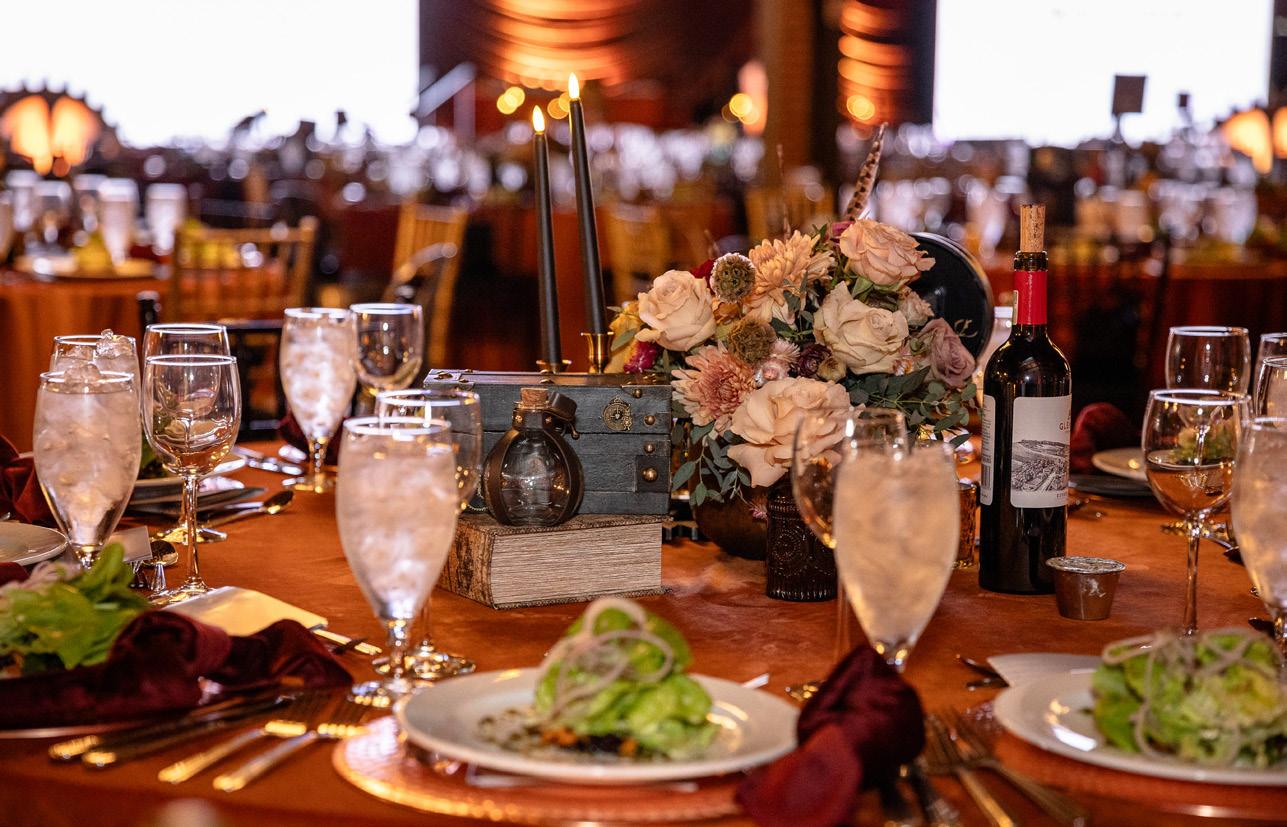Community, Philanthropy & Lifestyle

INSIDE THIS ISSUE
+ Pedal Power: Cycling for Change
+ The Summer Style Forecast Is In
+ Entertain Like a Pro: Secrets for Sizzling Soirées
+ Much More

Community, Philanthropy & Lifestyle

INSIDE THIS ISSUE
+ Pedal Power: Cycling for Change
+ The Summer Style Forecast Is In
+ Entertain Like a Pro: Secrets for Sizzling Soirées
+ Much More
How one unlikely visionary is rewriting the rules of giving



Supporting health and quality of life for 25 years, BHHS Legacy Foundation has invested more than $150 million in nonprofits and programs across Greater Phoenix and the Tri-State region of northern Arizona.

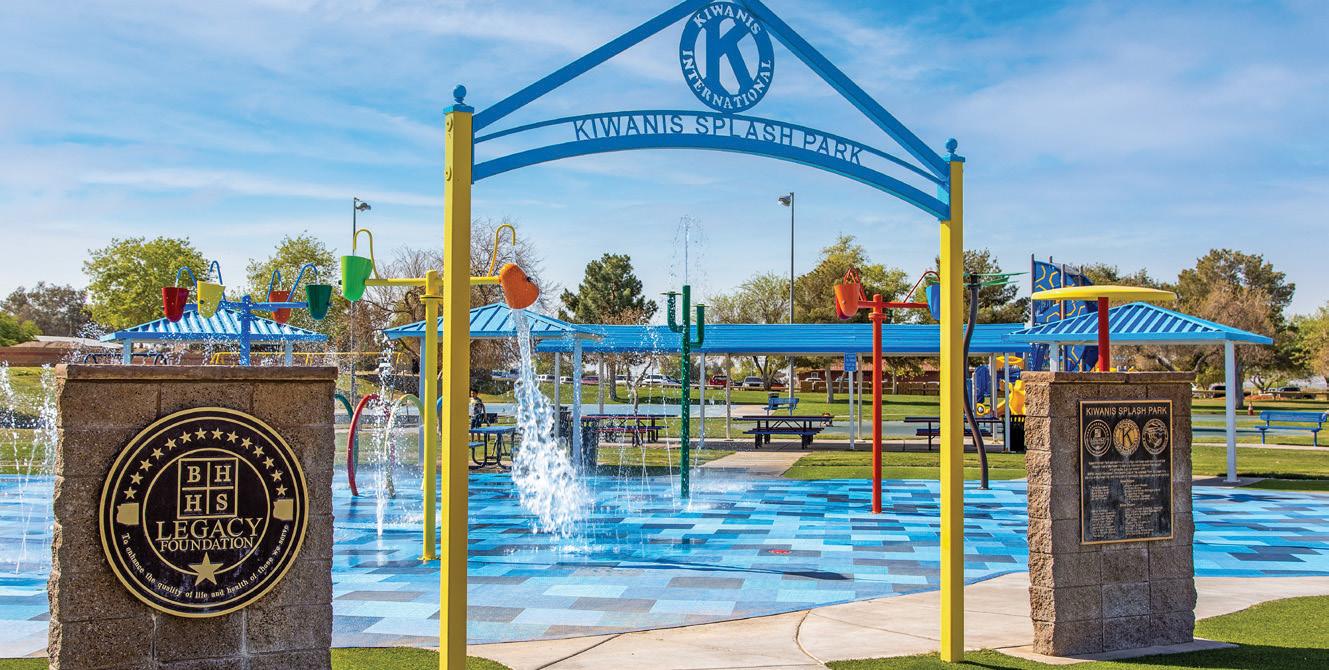
Help build healthier communities with your Arizona Tax Credit donation. Visit BHHS legacy.org or call 602.778.1200 to donate now.





EDITOR IN CHIEF
Karen Werner
PUBLISHER & CEO
Andrea Tyler Evans
CONTRIBUTING EDITOR & COO
Tom Evans
CREATIVE DIRECTOR
Neill Fox
ART DIRECTOR
Cheyenne Brumlow
CHIEF OF STAFF
Alicia Chandler
LIFESTYLE EDITOR
Zenobia Mertel
CONTRIBUTORS
Alison Bailin Batz
Traci Chandler
Julie Coleman
Michelle Jacoby
Shoshana Leon
FRONTDOORS TV HOST & EXECUTIVE PRODUCER
Carey Peña
SENIOR ACCOUNT EXECUTIVE
Lindsay Green
BEAUTY PARTNER
The Sparkle Bar Hair by BBV SALON
PHOTOGRAPHY
Scott Foust Studios
FRONTDOORS MEDIA ADVISORY BOARD
Latasha Causey
Russ Dickey
Rusty Foley
Sarah Krahenbuhl
Larry Lytle
Monique Porras Mason
Brad Vynalek
PHILANTHROPIC HONORS ADVISORS
Deborah Bateman
Linda Herold On the
Gil Gillenwater, founder of Rancho Feliz Charitable Foundation
info@frontdoorsmedia.com | frontdoorsmedia.com








Virginia G. Piper Charitable Trust
Working to advance children’s vision health through Eyes On Learning.
Talk with your child’s doctor about vision screening and visit eyesonlearning.org for a series of informative videos.

+ Brophy Community Foundation + Children’s Cancer Network + Down Syndrome Network Arizona + Dress for Success Phoenix + Rancho Feliz Charitable Foundation + Rob Dollar Foundation + Vision Gallery
Phillip Daniel, aka “Philly Ocean,” lead singer of Yächtley Crëw
for Everyone
Jennifer O’Connell, executive director of
Syndrome Network Arizona
Summer stretches out before us like an open road — and this issue is filled with the kind of people and stories that make the ride worthwhile.
We kick things off with some smooth-sailing swagger in 10 Questions with Phillip Daniel, better known as “Philly Ocean,” the charismatic lead singer of Yächtley Crëw. (Yes, it’s spelled like that.) Equal parts yacht rock and rock star, he’s everything we love about summer: bold, high-energy and unapologetically fun.
Inside, you’ll meet artists, philanthropists and innovators who are creating culture, not just consuming it. From the local artists at Vision Gallery to the powerhouse leaders behind Down Syndrome Network Arizona and Treasures 4 Teachers, these are people shaping a more beautiful, more generous world.
We escape for a lakeside adventure in Third Coasting, then slow down for reflection in Next Doors and Charity Spotlight, two deeply personal accounts of healing, reflection and finding grace in grief.
Style Unlocked serves up summer looks that prove fashion and ease can co-exist beautifully, while Kitchen Doors reminds us that some of the most delicious adventures start close to home.
And finally, our cover story: Rebel With a Cause. Over the past year, I’ve had the extraordinary privilege of editing Gil Gillenwater’s forthcoming book, “Hope on the Border.”
It’s a brave, deeply human manifesto about service, compassion and building connection across divides. Gil’s story — and the story of his charity, Rancho Feliz Charitable Foundation — is one of joyful disruption, radical empathy and finding meaning not in what we keep, but in what we give away. It is my honor to share it with you.
Here’s to a summer of meaning, movement and moments worth remembering.
Let the journey begin!
KAREN WERNER EDITOR IN CHIEF



“Philly Ocean,” lead singer of Yächtley Crëw
How did Yächtley Crëw get started?
We started putting the band together in 2016. It was the brainchild of our bass player and our drummer, who were listening to this music on SiriusXM. Like so many of our fans, we love this music. We grew up with it and thought it would be a fun thing to do, but very quickly it became apparent that people were into it and wanted to be a part of it. At our first show, people showed up wearing captain’s hats and were ready to sing along. It was pretty amazing.
What drew you to yacht rock?
This music is incredibly technical. There are a lot of complicated chord progressions, incredibly highend vocals, some amazing guitar riffs, bass riffs and keyboard solos. We wanted to play the music as close to the original artists as we could, so we dedicated ourselves for the better part of six months to really nailing the music. All of us are passionate performers, and we wanted to bring a new energy to it. We wanted to put it into a high-energy, fun show that people would get excited about.
How do you bring a coastal energy to a landlocked place like Arizona?
This music is a vibe, and people want that feel-good, easy-going vibe you’d get sitting on the sundeck of a yacht. I wouldn’t say it’s escapism. People, on a psychological level, need music and experiences that bring them together in a way that feels good. This is what life’s about — we want to be happy together. Not to wax poetic, but I think we have too few spaces in our world that provide that right now. We want to be a place where people have a good time, feel safe and make some awesome memories together.
Do you have a favorite yacht rock anthem that always gets the crowd going?
The great thing about our set is literally every song is that song. I’m not being hyperbolic. “Africa,” “Escape,” “You Make My Dreams Come True,” “Hold the Line” — our set list is full of absolute bangers. When you play a two-hour show and every one of the songs gets people screaming, it’s an amazing experience. As soon as we start playing “The Piña Colada Song,” they hear that drum solo, and it’s game over. People are ready. 1 4
As the frontman, how do you connect with the audience to create those memorable experiences for fans?
That’s my job. I grew up listening to singers like Kenny Loggins, Michael McDonald, Hall & Oates and my personal idol, Freddie Mercury. So those are the people that I want to emulate, because they were the best of the best. I see my job as giving the audience permission to let their guard down and have fun.
How do you keep your live shows from feeling like a parody?
We understand the irony with which we perform, but we never wanted people to think we were a joke band or a comedic act. That’s not what we do. It’s really about a culture. People show up dressed like us, and that is exactly what we want. We want everybody to be on the boat with us.
Yächtley Crëw has recorded original music. How do you balance being true to the genre while also making it your own?
It’s hard because these songs are so beloved, and writing a good song while trying to pay tribute to a genre is a tough task. The good thing is we’ve played these songs thousands of times. They’re in our DNA at this point. So, you use that for inspiration. Then it comes down to writing something you hope fans will appreciate. We have our original song called “Sex On the Beach.” Basically, it’s a song about getting drunk and falling in love, which fits really well in the yacht rock genre. It’s about capturing that fun as much as we can.
If you were curating the perfect yacht rock playlist, which three songs would absolutely make the cut?
Oh gosh. I would say, “Reeling in the Years” by
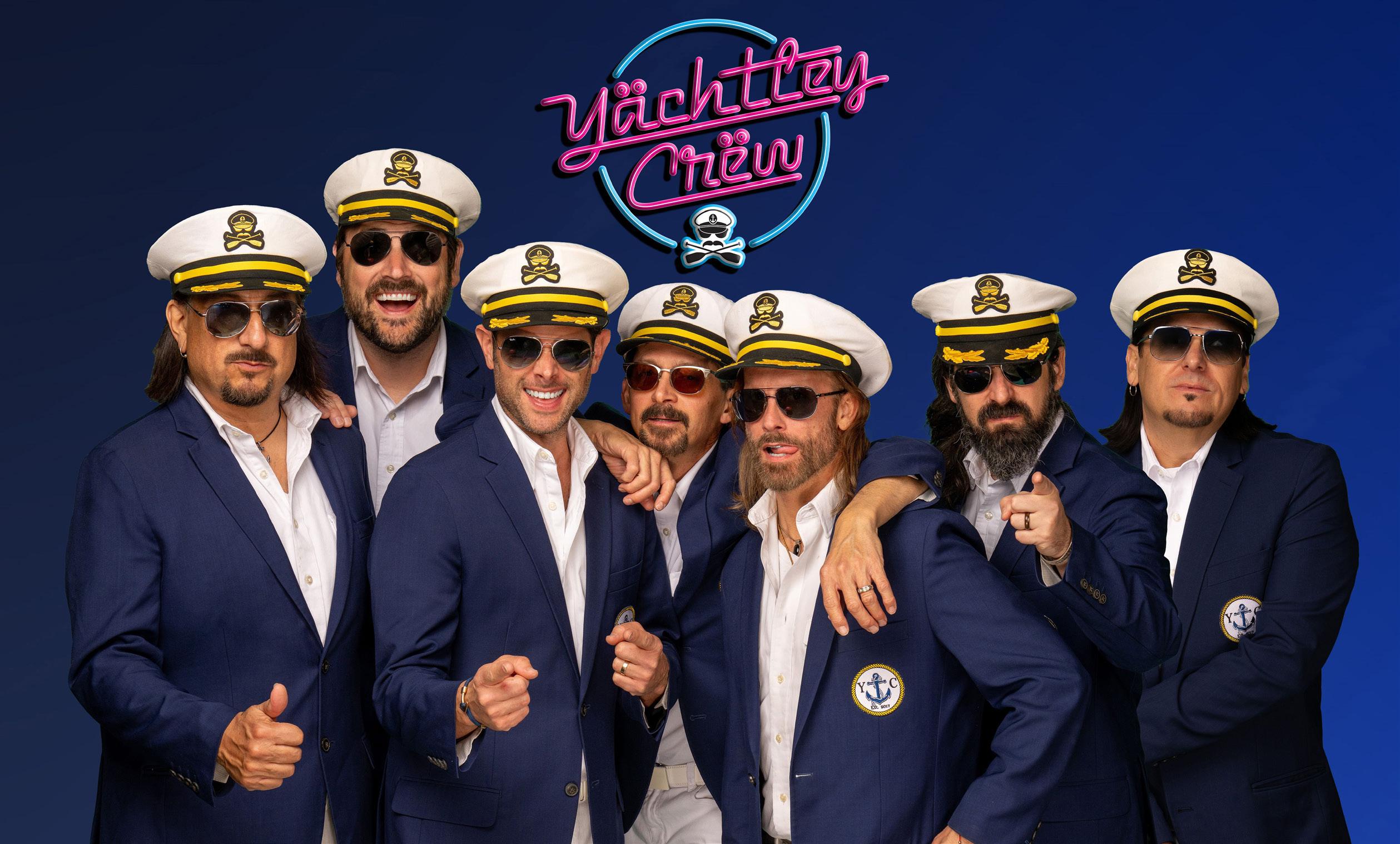
Steely Dan would have to be on there. I would probably put “This Is It” by Kenny Loggins on it. And then “What a Fool Believes” by Michael McDonald. But, you know, there are so many quintessential yacht rock songs, by narrowing it down to three, people are going to be up in arms. That’s the great thing about the genre. It invites passionate participation and debate about what is and isn’t yacht rock. All that stuff just serves to get people engaged in what we do, which is great.
Beyond your Arizona shows, what’s on the horizon for Yächtley Crëw?
We have a full-length album coming out this year, which we’ve been working on for the last year and a half. It’s called “Seas the Night,” and we’re incredibly proud of it. It really captures what we do live and the energy with which we play these songs. This year is the busiest, biggest year for us ever. We’re touring Australia, we’re going to be in Germany, we’re playing a number of huge music festivals. All of our dates are on our website and our social media.
Why do you think this music resonates so strongly with people today?
Even if you have never heard of yacht rock, you already know these songs inside and out. There’s such a hunger for this music out there and for places in the world where people can come together and have a good time and create awesome memories. We want to take it as far as we can.
Yächtley Crëw will be performing June 6 and 7 at The Marquee Theatre in Tempe and on June 21 at the Pepsi Amphitheater in Flagstaff.
To learn more, go to yachtleycrew.com




Solari Crisis & Human Services provides community-based crisis intervention services. We answer all calls made in Arizona to 988, the National Suicide & Crisis Lifeline, as well as to our statewide crisis line. Our trained and caring crisis specialists are available 24/7/365 and we responded to more than 500,000 calls in 2024.
Our state's citizens benefit directly from your support. When you donate to Solari, your contribution, no matter what size, supports the teams that provide mental health support and information referral services to those in need.
Please consider making a recurring donation to our nonprofit organization if you are passionate about making an ongoing difference in our communities.
Make a Donation Today! Scan the QR Code or visit Solari-inc.org/donate
Arizona law allows QCO donations made during 2024 or donations made from January 1, 2025 through April 15, 2025 to be claimed on the 2024 Arizona income tax return.
Consult your tax professional for further information.


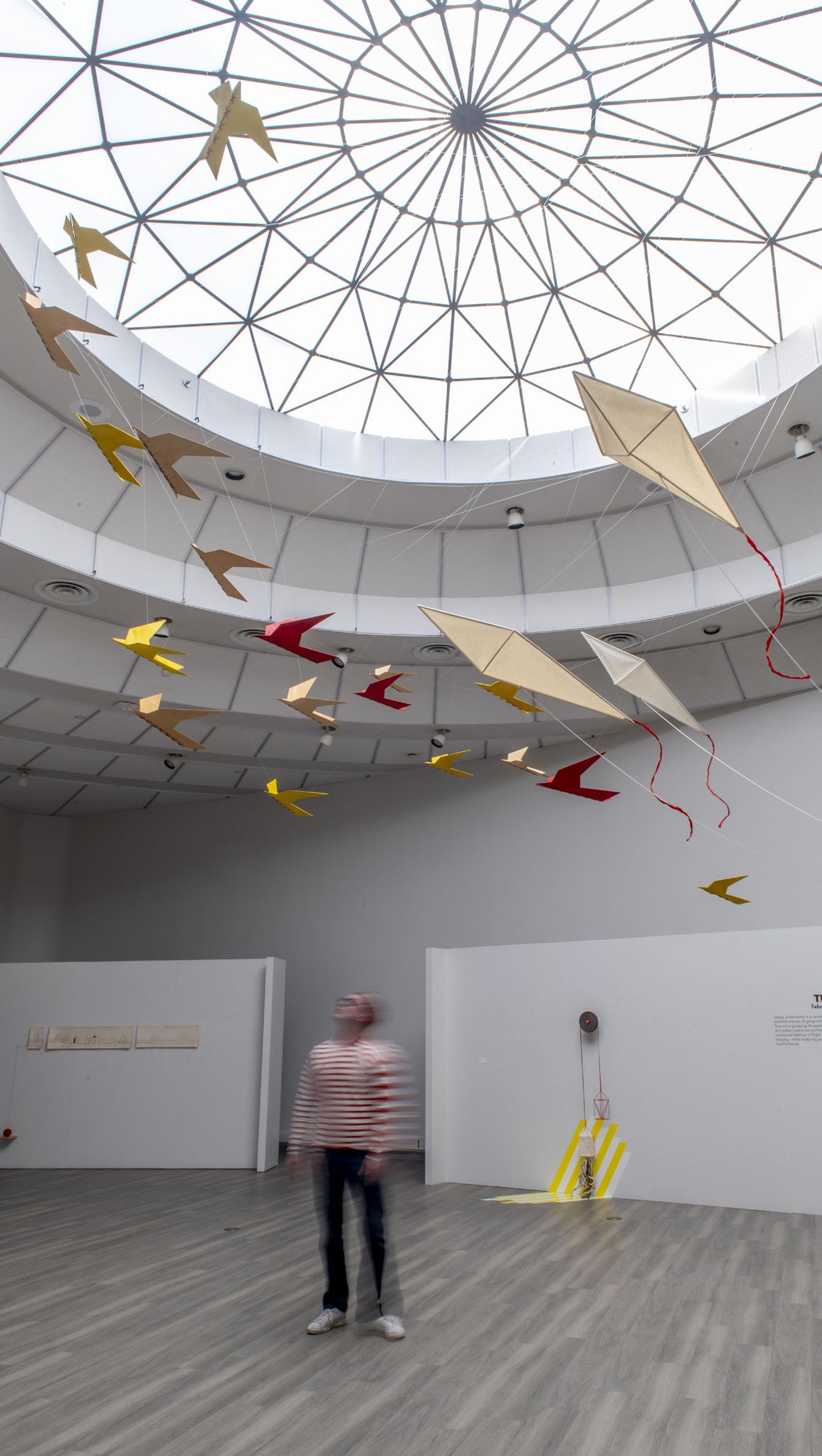


BY MICHELLE JACOBY
In the heart of downtown Chandler, tucked inside the City Hall complex, Vision Gallery has quietly evolved into one of the East Valley’s most dynamic cultural destinations. With rotating exhibitions, interactive community programs and a deep commitment to inclusivity, the gallery offers a vibrant, ever-changing art experience — one that surprises and delights with each visit.
Founded in 1997 as a commercial gallery supported by the Chandler Cultural Foundation, Vision Gallery moved to its current space in 2010. Now operating under the umbrella of the Chandler Museum, its mission has shifted from selling art to showcasing it in ways that spark dialogue and reflect the city’s rich diversity.
“Our main focus is to highlight local, regional and sometimes national artists,” said exhibits curator Jillian Nakornthap. “We want this space to reflect the diversity of the Chandler community.”
No single style defines Vision Gallery. One month,
visitors might encounter a bold graffiti wall; the next, delicate quilts or large-scale installations suspended from the ceiling.
“We’ve shown everyone from graffiti artists to quilters,” Nakornthap said. In fact, the annual quilt exhibition — now in its 30th year — is one of the gallery’s most beloved traditions.
Thematically curated group shows are another hallmark. “We had an exhibit called ‘Chasing Ghosts’ that dealt with grieving, and one called ‘Ties That Bind’ that focused on familial relationships,” Nakornthap said. “A recent exhibit, ‘Speak to Me Softly,’ featured work by female and nonbinary artists using soft materials to explore heavy topics.”
Community-centered exhibitions are a big part of the gallery’s programming, as well. One of the most popular was “Cruising,” a celebration of lowrider culture curated by a city staff member and local enthusiast. Complete with a car show outside the gallery, the event drew over 1,000 attendees.
Vision Gallery also extends its reach through a second exhibition space at the Chandler Center for the Arts — a perfect cultural detour before or after a show. This satellite gallery features smaller group and solo shows, opencall exhibitions and the annual Chandler Unified School District high school art exhibition.
“We recently did an exhibition with Miguel Godoy, a local artist and Chandler resident who designed the ‘El Valle’ wording on the Phoenix Suns jersey,” Nakornthap said.
Outside the exhibitions, the gallery is committed to arts education and engagement. Programs like Vision Kids offer free art classes for children ages 6 to 16, while Art Social workshops give adults the chance to create and connect. Make & Take sessions invite families to drop in and craft together, with past activities ranging from origami to watercolor postcards.


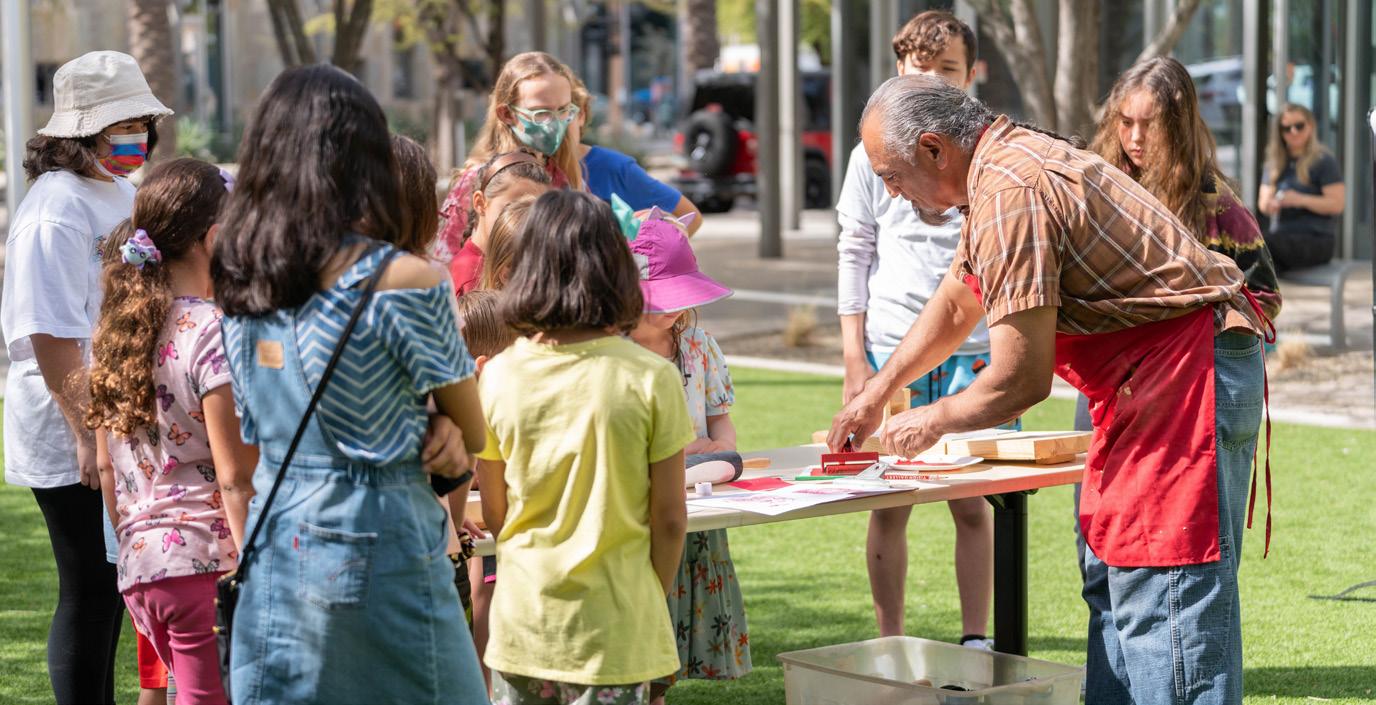
Vision Gallery also partners with Chandler’s public art program, occasionally spotlighting artists who’ve designed city murals and utility box artwork. This fall, muralist Ariana Enriquez, whose work can be seen throughout Chandler, will present an installation inspired by the women in her family.
Whether you’re a dedicated art lover or simply strolling downtown, Vision Gallery offers something rare: a welcoming, accessible and thoughtfully curated art experience — one that’s free and open to all. The gallery is open Monday through Saturday from 10 a.m. to 5 p.m., inviting visitors to explore its ever-changing exhibitions at no cost.
“It’s important that people feel welcome and not intimidated,” Nakornthap said. “Art is for everyone.”
And at Vision Gallery, it truly is.
To learn more, go to visiongallery.org

DATE: April 30, 2025
BENEFITTING: Liver Foundation
CHAIR: Chef Christopher Gross alfflavors.org
DATE: May 17, 2025
BENEFITTING: The Leukemia & Lymphoma Society
CO-CHAIRS: Kristie Waters & Lisa Moore lls.org

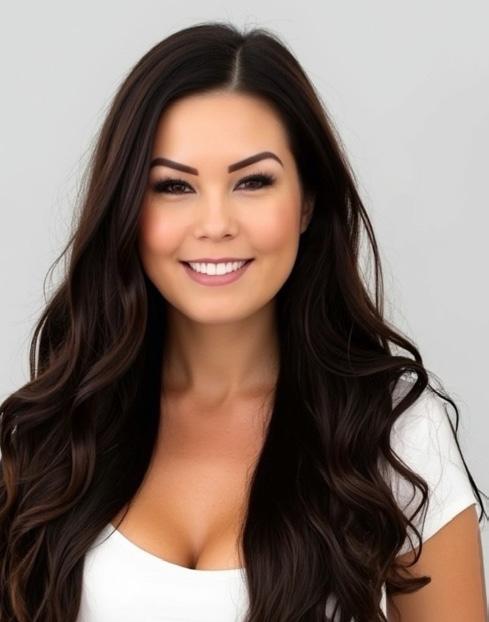









BY ZENOBIA MERTEL





























Our heartfelt thanks to our top sponsors for their generous support!













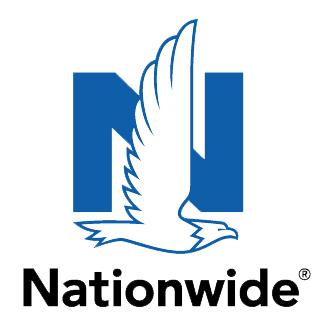





Chef CJ Bowie shares tips for effortless entertaining

The sun may be blazing, but that doesn’t mean your summer entertaining has to wilt. We caught up with Scottsdale-based private chef CJ Bowie, the talent behind Blue Bowie Personal Chefs, to glean his expert tips for hosting memorable gatherings, whether you’re embracing the heat or escaping to cooler climes.
With a culinary journey that spans learning classic fine dining at the California Culinary Academy under the tutelage of world-class chefs to crafting healthy, creative meals for professional athletes, Chef CJ knows a thing or two about impressing guests. Here are his top five secrets to summer entertaining success.

As your guests arrive, set the tone with an elegant cheese board. Offer a selection of cheeses alongside crisp chilled white wine to refresh palates. For a trendy touch, greet guests with a signature cocktail. Chef CJ suggests vibrant mojitos, encouraging creativity with fresh, seasonal fruits and aromatic herbs for a refreshing burst of flavor and added visual appeal.

Create a sophisticated backdrop for your summer fête by styling your space with a modern black-and-white palette. Then let the menu, service pieces, bar setup and table settings bring the texture and color. For an extra touch of flair, Chef CJ suggests embracing a French-themed menu to complement the chic aesthetic. Voilà!

Forget fussy, last-minute preparations. Today’s mains are all about bold tastes and make-ahead techniques. Chef CJ favors flavorful, make-ahead methods, such as braising or preparing the selected protein with sous vide. His go-to recommendations include succulent slow-braised short ribs served with a creamy cauliflower puree and Parmesan-infused risotto, or delicate sous vide lemon and dill sea bass finished with a classic butter and white wine sauce. Both options ensure tender, perfectly cooked proteins with minimal stress on the host.


Looking for a unique way to entertain? Try something playful, like a murder mystery dinner party. Chef CJ has noticed the increasing popularity of these immersive events. By coordinating with an entertainment company that manages the theme and game logistics, you can tailor your menu and service pacing to match the evening’s drama and intrigue.

Chef CJ’s golden rule for summer entertaining? Make it easy on yourself! Rentals can create a polished, custom look without the stress, and printed menus at each place setting add a personal, elevated touch. If your budget allows, bring in a private mixologist to handle the bar — guests will love the sophisticated attention to detail, and you’ll enjoy the evening as much as they do.
For more information and inspiration, visit bluebowiepersonalchefs.com
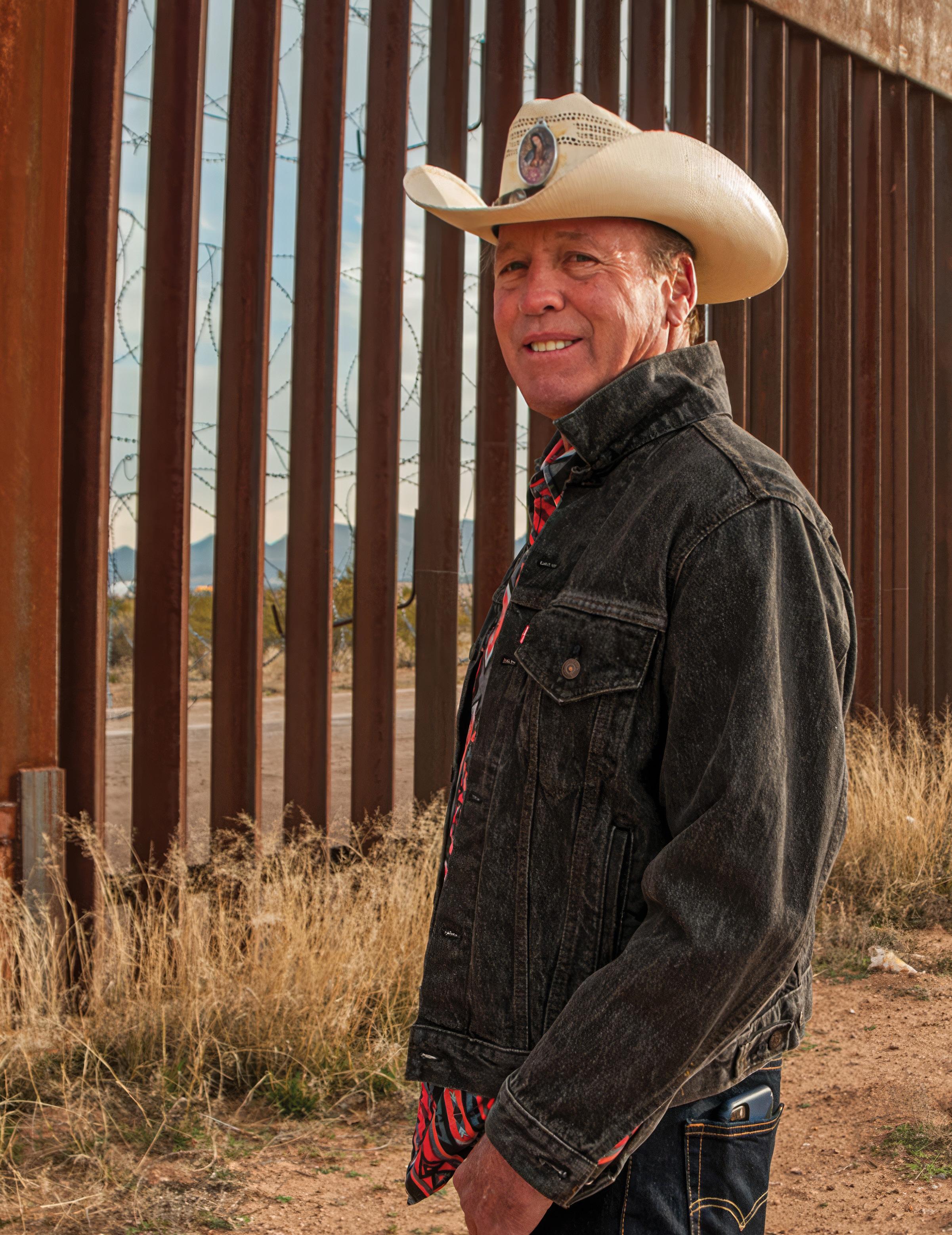
Gil Gillenwater turned a wrong turn to Mexico into a decades-long crusade to upend poverty — and in the process, found a path to salvation.
BY KAREN WERNER

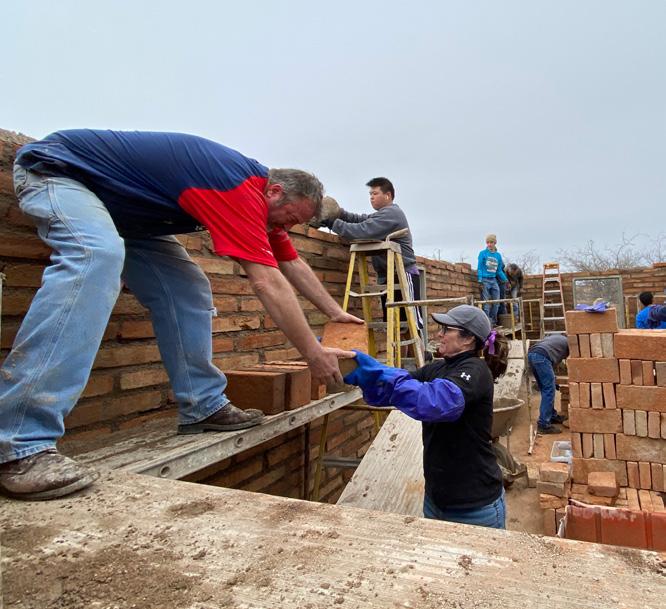

The tequila is flowing in the border town of Agua Prieta, Mexico, a four-hour drive from the Valley. Someone strums a guitar as Powell “Gil” Gillenwater raises a glass to a group of exhausted volunteers. They’ve just framed a house in a single weekend — for a family they’d never met.
On one side of the border, Gil is a cowboy-philosopher, part mystic, part Marlboro Man. On the other side, he’s a beloved disruptor of destiny — building homes, funding schools and helping thousands of families climb from extreme poverty into something like a middle class.
At 71, Gil is energetic but reflective as he looks back on his decades of work with the Scottsdale-based Rancho Feliz Charitable Foundation, a philanthropic powerhouse that has funneled more than $18 million into a maverick kind of binational human uplift.
“At Rancho Feliz, we don’t serve the less fortunate

out of guilt or obligation,” he said. “We understand that our own liberation is bound with those we serve. In other words — we serve ourselves by serving others.”
That’s not just talk. Since founding Rancho Feliz in 1987, Gil has led the creation of a full-fledged masterplanned community, three orphanages, two education centers, two childcare facilities and a scholarship program that’s funded more than 3,700 students. Over 64,000 bags of food and countless tons of medical supplies have crossed the border with him. But those statistics only hint at the scale of what’s been built: not just homes and infrastructure, but opportunity and dignity.
He isn’t regarded in Sonora as some do-good gringo. Rather, in 2021, he was chosen by the Premio a la Sonora Filantropia as the individual philanthropic person of the year, the first non-Mexican to win the prestigious award.

Gil’s accolades — and reputation — loom to a ridiculous degree. He’s trekked through 75 countries, co-authored a book about finding Tibet’s fabled Hidden Falls, and taken the Bodhisattva vow of compassion from the Dalai Lama himself. He’s a certified yoga instructor, a black belt in Kenpo Karate and an explorer with a spiritual streak. The Arizona Trail Association will soon spotlight him in a documentary, and he’s been awarded the Hon Kachina, the state’s highest honor for volunteerism.
But back at his house in the upper reaches of Scottsdale, he is a mortal man in the middle of a photo shoot. His wife Izuru — patient and perceptive — helps him select a cowboy hat, while Gil thinks about his past.
That other life — the one where he structured limited partnerships that purchased, zoned and sold over 10,000 acres of Arizona land — is still part of his story. But everything shifted one fateful Thanksgiving, when Gil and his brother Troy loaded up a Jeep with supplies and headed to Mexico to deliver them to people in need. They took a wrong turn, missed their intended destination and ended up in Agua Prieta. What they saw there changed them forever.

“There were kids wandering the streets, families living in homes made from wooden pallets. No plumbing. No electricity,” he said. “It shifted something inside me.”
The jolt was an extension of his meditation practice. “When we silence the mind, the hard line between me and you gets blurred, and all of a sudden, you start seeing yourself in others,” he said. “No longer could I sit back and say, ‘Well, shoot, that’s their bad luck.’ I had to do something about it, because I was doing it for me.”
Over the past four decades, Rancho Feliz has evolved from a borderland charity handing out food and supplies into something more revolutionary — one that replaces pity with purpose and handouts with human connection. Through its Vecinos Dignos (Worthy Neighbors)
subdivision, families apply to earn their homes, quite literally. Under a rent-to-own agreement, the tenants make no-interest payments and donate volunteer hours, and their children are offered scholarships to attend bilingual schools. Gil calls this “reciprocal giving” — a loop in which both giver and receiver are empowered. No handouts or hierarchy, just a system that nurtures self-reliance and change.

“Right now, I’ve got two families — two single mothers with six children, each with no money. And then I come in and say, ‘My organization, these beautiful donors and volunteers, are going to build you a three-bedroom home with a heating and cooling unit, electricity and water, where you can live with dignity.’ That’s 14 people whose lives we have changed forever,” he said. “That’s a joy that will not go away.”
Gil is determined to share that joy, hosting over 27,000 volunteer visits, where volunteers work in soup kitchens, orphanages, animal shelters and community gardens, in addition to building homes. Rancho Feliz began a recycling program that has collected more than 20 million pieces of trash and recycled them to fund high school scholarships.
In this pragmatic way, Rancho Feliz aims to make a dent in the border crisis. Providing people with opportunities, not welfare, allows them to live with dignity in their own country, eliminating the need to migrate illegally into the United States.

Informed by his travels, Gil is horrified at the imbalance in our backyard. “I know of no other place with the disparity that we experience here in southern Arizona. You go from India to Pakistan, and it’s not a big deal. Here, you go from working for $14 or $15 an hour to $12 to $14 a day. Of course, you’re going to have people that want to go from one economic situation to another,” he said.
Through Rancho Feliz, Gil sees a practical approach to addressing two prongs of poverty at once — the material



Gillenwater makes time to meditate each day. ‘Meditation changes people,’ he said. ‘It changes the way we think and relate to our world.’ He is shown here in his home studio holding a river-worn rock that kept him grounded during a Class 5 rafting expedition in Tibet.

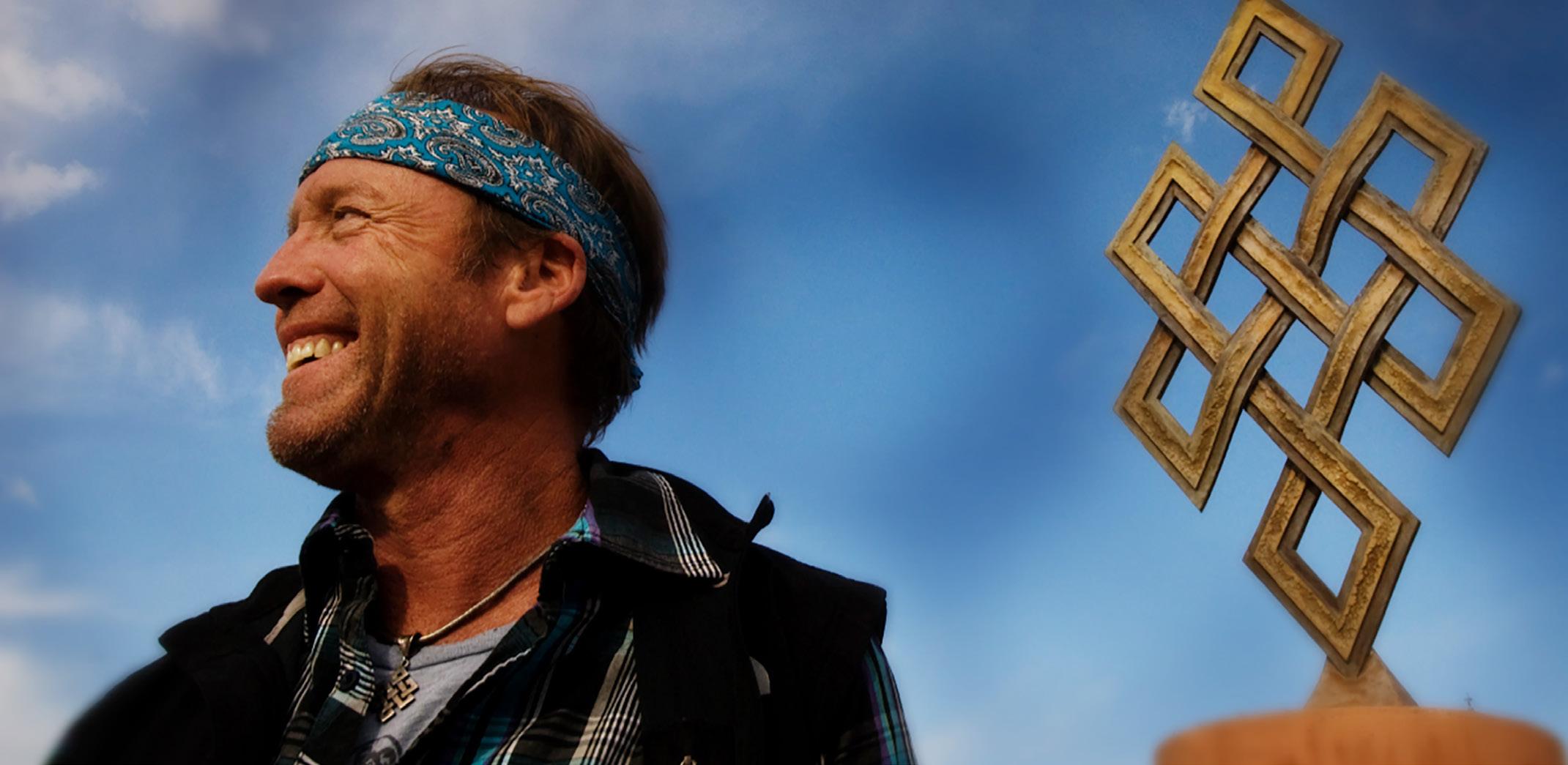
poverty many Mexicans feel and the spiritual poverty that plagues the affluent on this side of the border.
This brings us to perhaps the most revolutionary aspect of Rancho Feliz, and the message Gil is eager to share with the world. “I believe there’s something missing in our lives,” he said. “We’re communal. And when that’s removed and replaced by the almighty dollar, we’re all missing something.”

He believes that the remedy can be found in service. “It’s not Sedona hocus-pocus,” he said. “There are real psychological and physiological changes that take place.”
It’s a sentiment echoed by volunteers, many of whom describe Rancho Feliz trips in almost mystical terms.
“It was definitely a magical weekend,” said Nili Azhar. “Lina and I have been lamenting it being over and keep talking about the next trip.”
At Rancho Feliz, service work takes on the guise of a party. Volunteers from the U.S. and Canada stay at the Hacienda Feliz dormitory and gather when the work is
done for tequila and Mexican feasts. The good will and good feelings are palpable.
“We could feel the strong Rancho positive vibes and love the moment we arrived,” said volunteer Pat Mahoney. “It engulfs everything and everyone.”
This happens naturally, Gil posits, through a natural vetting process. “I don’t mean to be crude,” he said. “But assholes don’t volunteer.”
That filtering effect — where only the spirited and motivated show up — has shaped more than just the volunteer experience. It’s helped Gil refine a philosophy of giving that challenges convention and flips the script on who truly benefits from philanthropy.
“I live in Scottsdale, Arizona,” he said. “There are wonderful people in Scottsdale, but they’ve got a whole lot of money and could make a real difference, not only in the world, but in their own lives. Because many of them I talk to are not particularly happy people.”
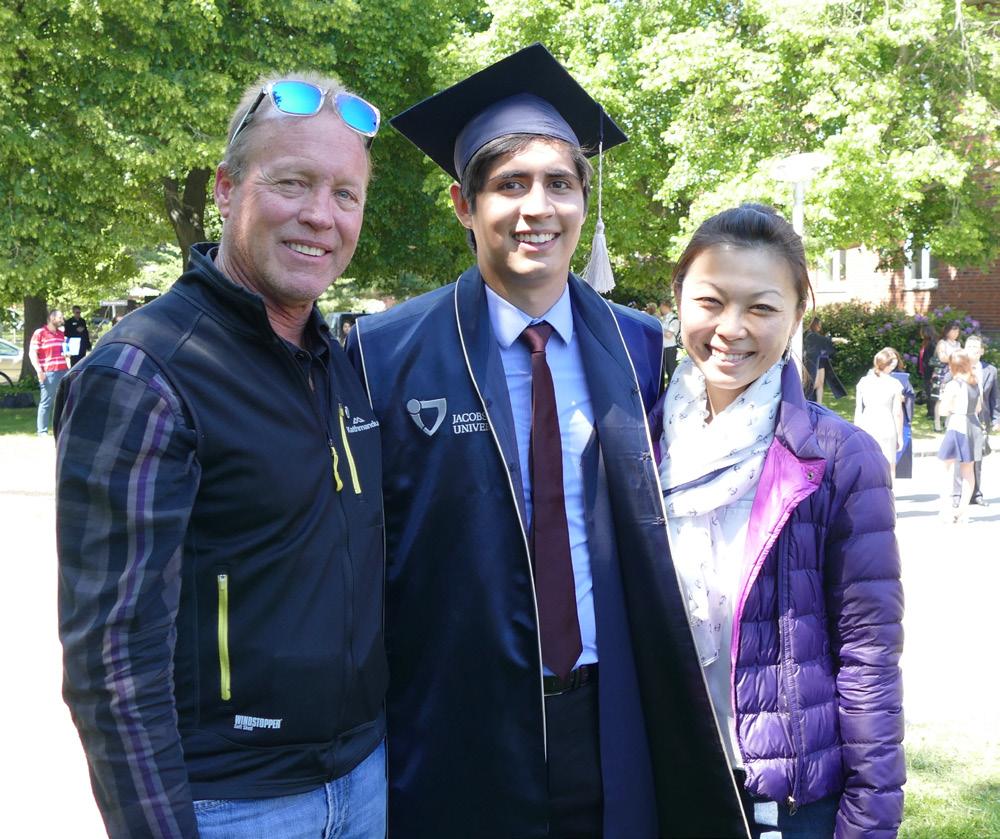
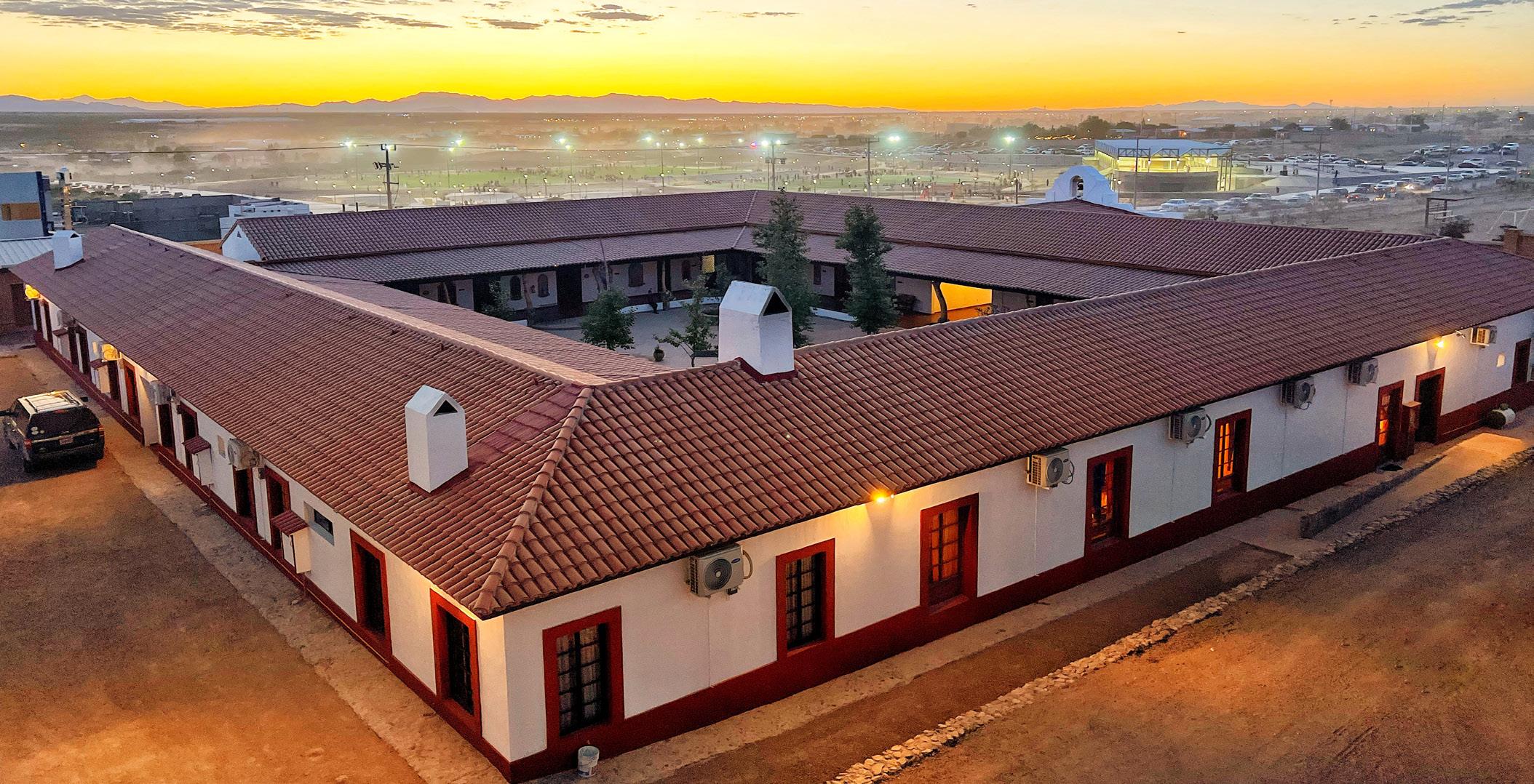


In his view, the comfort class feathers its own hereditary nests in a constant quest for happiness. Sprawling houses, new cars, overseas travel and always-on technology provide distractions from life’s larger questions. “We’re entertaining ourselves to death,” Gil said.
He knows something about this, having spent his formative years looking for the next better thing. Gil was a restless freshman on a football scholarship at Brigham Young University, from which he dropped out to play at Rice University before graduating from ASU. Later, he left his first marriage after a brief year-and-a-half to go on adventures around the world.
He doesn’t regret his early days as a seeker. “It’s incumbent upon us to find out what truly makes us happy,” he said. “If you read any of the great philosophers and spiritual leaders from the beginning of time, it all comes back to serving others.”
This realization has informed his approach to charity, a word he despises. “It’s such a weak term,” he said. “In the United States, what does the First Lady do? Oh, she works on charity. It’s when I have enough time, when I have leftover money. It’s a sacrifice. Who’s gonna sign up for that?”
Instead, Rancho Feliz positions philanthropy as an absolute blast. From happy hours in a tower built specifically to provide sunset views while raising a glass, to extreme sport/extreme karma fundraising fandangos, Gil attempts to make service work fun. “We’re here only one time. So why wouldn’t you make life as happy as it can possibly be?” he said.
Indeed, the grueling, multi-day fandangos are the stuff of legend. Participants raise funds and pay their own expenses for these endurance events. Starting in 1997, when 10 volunteers and five Tarahumara Indians ran 678 miles in a 114-hour relay from Kanab, Utah, to Agua Prieta,

Mexico, and raised over $160,000, to the 2009 five-day, 333-mile bicycle odyssey across the Navajo Nation, raising $775,000 in the process, these sporting events have generated outrageous times and impressive hauls.
Which brings us back to the copious good the charity has done. With millions already invested in reshaping lives along the U.S.-Mexico border, the organization is at an inflection point. Originally, Gil intended to sell the real estate, put the proceeds into scholarships and walk away some day. But Jim Armstrong, the Canadian founder of JDA Software, made an impassioned case for otherwise. Armstrong, who began volunteering with his family in 1998, has been critical to Rancho Feliz’s growth. He impressed Gil that its programs and scholarships must continue.
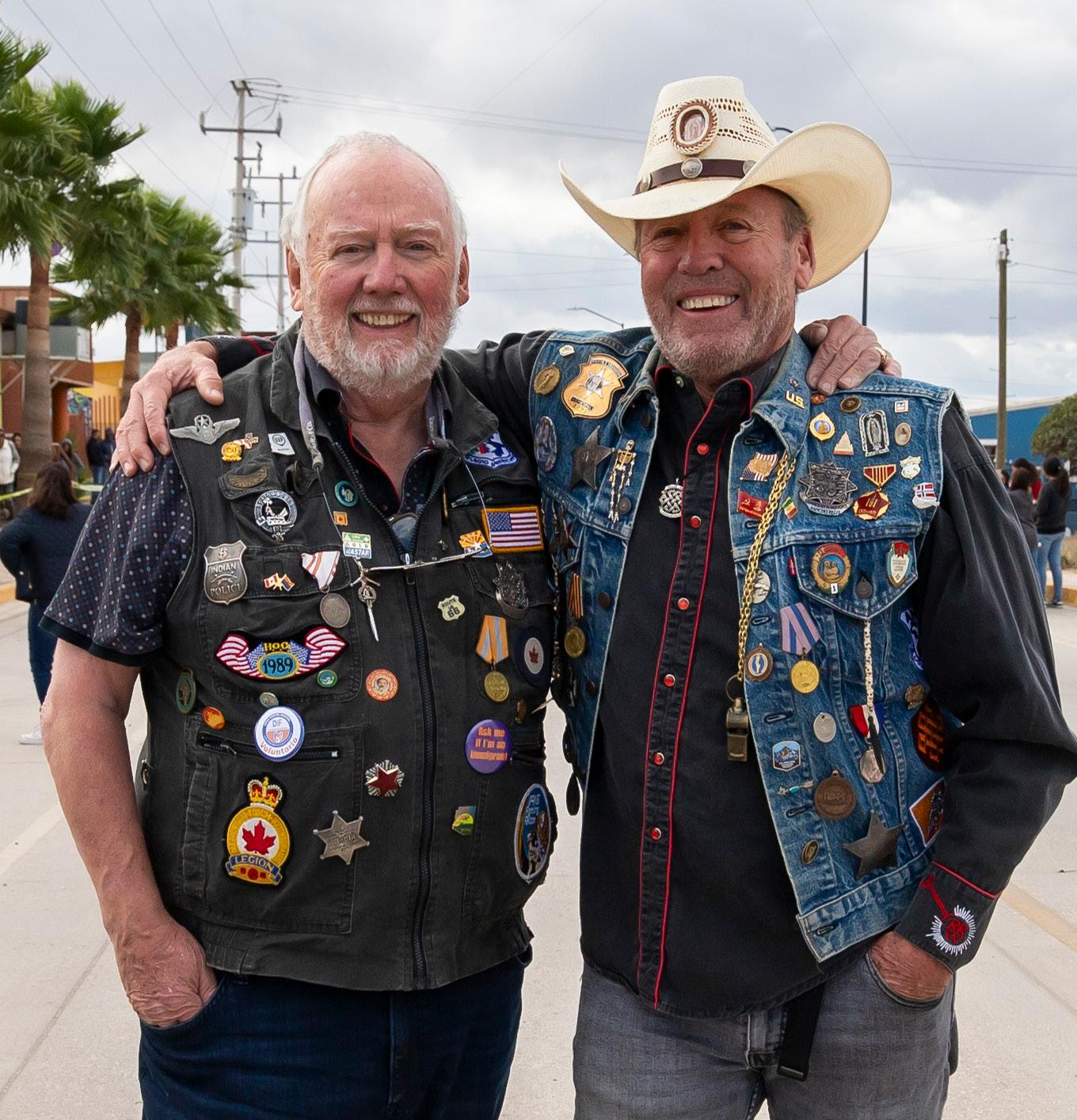

Gil and Izzy split their time between Scottsdale, Agua Prieta and Flagstaff.
And so, Gil is reentering the Scottsdale scene, determined to lay the groundwork for a future without him. Last fall, he hired community leader Donna Valdés as Rancho Feliz’s first CEO while he continues as its president on a messianic mission to share its story with the world.
“I’ve done this for 40 years. I don’t have children of my own,” Gil said. “To me, raising children is the largest service project you can possibly do. I waived that and did this instead. So I’m hopeful we can find people of enthusiasm and resiliency who can take this project on, because it’s all in place.”
He’s been thinking about this a lot lately — his place in the world — here in his house with Izuru by his side. “I don’t know how I could do it without her,” he said, describing the enormous leveling effect she’s had on his life. Gil didn’t remarry until he was 63, after Izzy waltzed into a Bikram hot yoga class.
“She’s from Japan. Talk about the yin and the yang,” he said. “She runs the little tienda at Rancho Feliz and decorates the rooms. She’s an amazing partner and has been a gift.”
Gil is grateful for his abundant life, but it’s not posturing to say that he is anxious — really anxious — to get his message out. He recently finished writing a book called
“Hope on the Border,” an edgy manifesto that lays his beliefs on the line. His message is clear: Service isn’t sacrifice. It’s salvation.
“The purpose and joy I have gotten from Rancho Feliz far exceeds my business successes. I really do believe when we are in service to others, God or spirit or whatever you’re more comfortable with reveals itself to those with a higher purpose,” he said. “The most selfish thing that we can do is serve.”
To learn more, go to ranchofeliz.com



For the Luttrell Family, founding the Children’s Cancer Network was personal
BY TOM EVANS
People often talk about cancer in terms of it being a journey. For the Luttrell family, that journey has included some complex twists and turns — but created something amazing along the way.
Patti and Steve Luttrell are the founders of Children’s Cancer Network, a nonprofit that has been serving children with cancer and their families for more than two decades.
In August 1993, their 5-year-old son Jeff was diagnosed with acute lymphoblastic leukemia. Over the next seven years, Jeff endured multiple rounds of chemotherapy, radiation and a bone marrow transplant — and four relapses. After nine cancer-free years, he developed a secondary cancer
— squamous cell carcinoma of the tongue — which returned when he was 25.
Inspired to help others in a similar situation, Jeff’s sister Jenny worked to put on a fashion show for children with cancer and their siblings to raise both spirits and funds. The show’s success led to the creation of Children’s Cancer Network.
Now, more than two decades in, the Luttrells and Children’s Cancer Network are experiencing new pathways in their journey.
The world is five years removed from the start of the COVID-19 pandemic, but the ripple effects are just now starting to resolve themselves for Children’s Cancer Network.
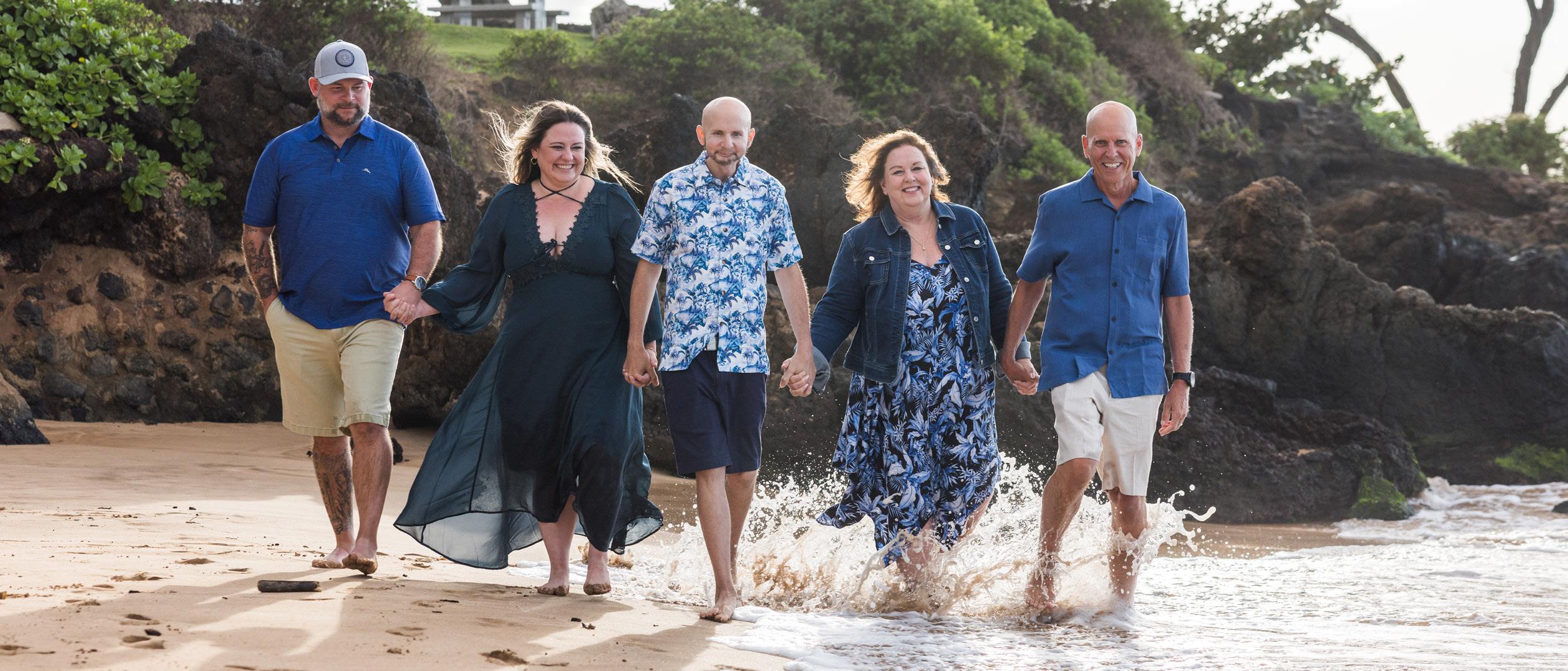
“COVID was interesting, to say the least,” Patti said. “We pivoted — well, we flipped — into a mode where we did drive-through events, and that actually worked really well. But I think the hardest part was when the hospitals shut down. If one parent was inside with the child, the other might be in the parking lot, hearing tough news for the first time — like a diagnosis — and there was no one there to support them. That was really hard.”
Children’s Cancer Network only returned to work in hospitals toward the end of 2023, and found that the families of the child cancer patients were often reluctant to open up.
“It was tough to draw families out of their rooms,” Patti said. “Families were nervous about connecting again. They were shy and protective of their children, which is completely

understandable. But over this past year, we’ve seen that change. Families have become more comfortable, realizing that connection isn’t a risk — it’s a benefit.”
Along with the reengagement of families in hospitals, Children’s Cancer Network has also expanded in several ways over the past few years. The first is physical — their Chandler headquarters has more than tripled in size, including the addition of the new Let’s Move Center, where children with cancer can play and exercise in a safe space.
“It’s a space we can clean thoroughly, and it works for everything from a private family celebration to a camp party for 40 kids — it’s very versatile,” Patti said.
Another significant change has been collaborations with other nonprofits. Two prominent examples include their

Adopt-a-Child-with-Cancer Program in collaboration with 15 Lions Clubs across Arizona to support families within their home communities. Another is a partnership with the Colton Cowell Foundation’s Superhero Program to provide children with cancer an extraordinary day of superhero-themed activities. They’re also collaborating with the Leukemia Foundation for Arizona’s Children, with whom they recently did a second annual movie day.
“We’ve realized how many amazing people are doing great work, and we’re stronger together,” Patti said. “These collaborations have been a huge positive this past year, and we’re excited to keep building on that.”
Amid these changes, the Luttrells also experienced a personal shift: Steve retired from the banking industry, allowing him to be more hands-on with the nonprofit.
“This work is special,” Steve said. “I’d go to the events and see families I’ve gotten to know really well. I used to know many of them from our annual CCN run and other events, but now it’s on another level. You come home after a day like that and think, ‘This is why we do it.’”
Patti’s next big goal for the organization is the creation of a food pantry for the families they serve.
“We’ve had people at our gala express interest in
helping with that, which was encouraging,” she said. “The need is growing — not just because the population is increasing, but also because childhood cancer rates, especially among adolescents and young adults, are rising.”

They are working to bridge the support gap for patients who are growing up — moving from pediatric cancer to becoming adolescents or young adults. The organization is also pushing forward with new education initiatives, including online resources for new patients and their families.
When asked if he’d considered just playing golf instead, Steve laughs.
“Golf is great and all, but this — this is something else,” he said. “It keeps us young, keeps us engaged. You’re not sitting around — you’re connecting with people and staying involved.”
For more information, visit childrenscancernetwork.org


Frontdoors Media will once again be producing its special Tax Credit publication featuring qualified entities for the 2025-26 tax season. The Arizona Tax Credit Giving Guide will launch as a Special Edition of Frontdoors Magazine in October 2025. We will continue to market the publication (digital and print) through Tax Day, April 15, 2026. The Arizona Tax Credit Guide will be distributed digitally via our weekly newsletter to over 40,000 readers and in print to all subscribers of Frontdoors Magazine. It will also be sent to more than 1,900 local tax preparers, more than 30 Valley Safeway stores and other community locations in the weeks to follow.

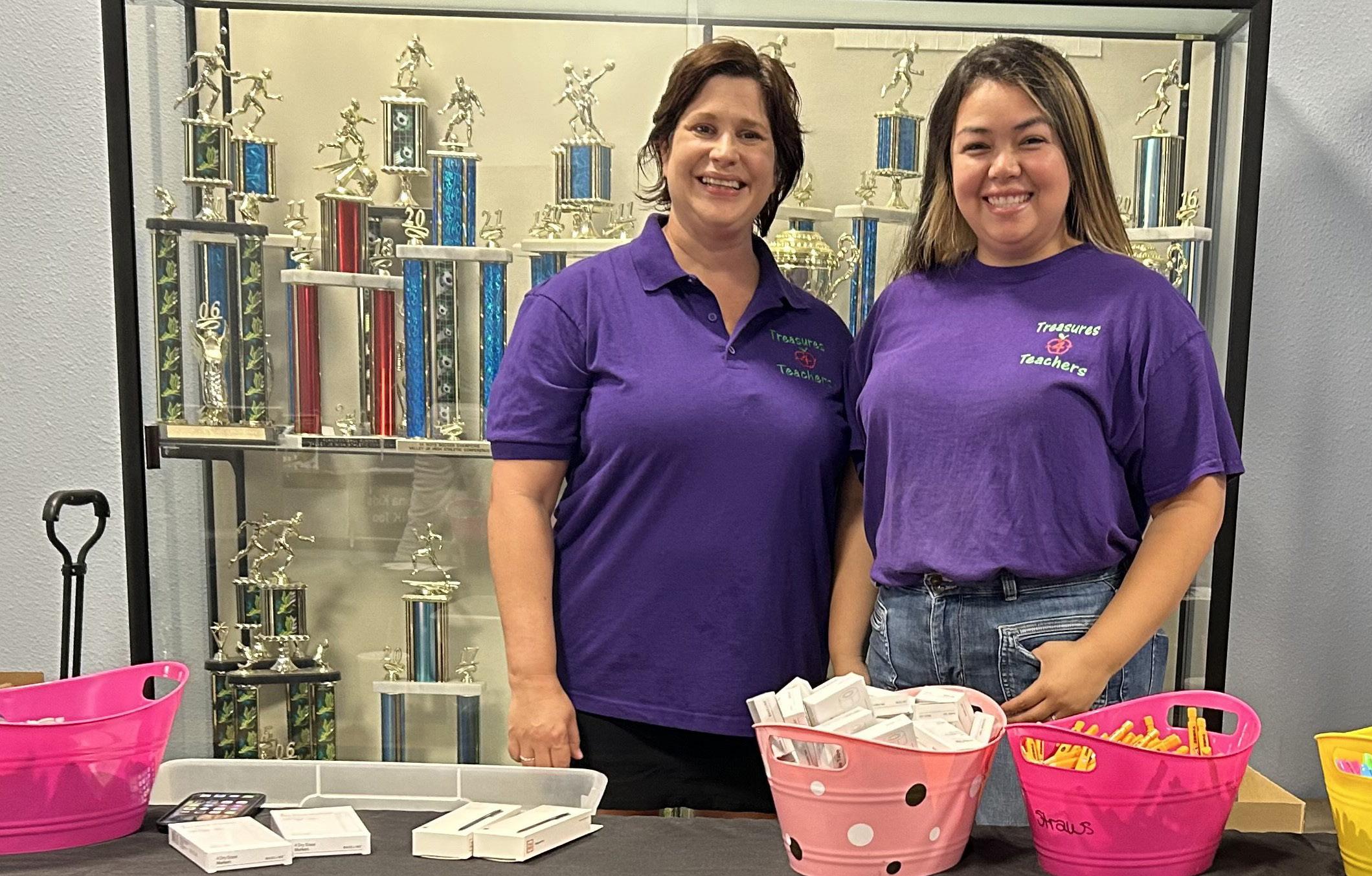
BY JULIE COLEMAN
Ashoe for a pencil. That’s what Barbara Blalock witnessed while working at the Valley of the Sun YMCA — a 7-year-old student trading her shoe to borrow a pencil from her teacher. The teacher explained to Blalock that she didn’t have enough pencils and knew she would get her pencil back because the student wouldn’t leave without her shoe.
Determined to address the critical lack of school supplies, Blalock reached out to a local company, asking if
they had any surplus to donate. The company agreed, and Blalock gathered the supplies, stored them in her garage and distributed them to preschools.
As additional companies donated their surplus supplies, it was no longer feasible for Blalock to store them in her garage. Through tireless efforts and determination, she founded a reusable resource center for Arizona teachers called Treasures 4 Teachers, which now serves 8,000 educators and impacts 250,000 students each year.

The nonprofit’s work has been anything but textbook in the more than two decades since it began. Blalock has retired as founder and executive director, and Joy Klein began leading T4T a year ago. “I was drawn to this role because it was education-based and also had the sustainability component,” Klein said. “I am a courageous lady, and it is exciting to reimagine and take the organization to its next level.”
That next level for T4T includes collaborating with other nonprofits and serving as a community connector. In partnership with Restore Arts, an organization that reconditions donated musical instruments, instruments are sold at T4T, with each organization equally sharing the profits.
AZ StRUT, a nonprofit specializing in technology refurbishment and electronic recycling, rents an adjacent suite from T4T. This benefits both organizations — providing T4T with additional revenue while giving AZ StRUT muchneeded space to expand its operations. The partnership also streamlines donations, making it easy for visitors dropping off classroom supplies at T4T to also recycle electronics with AZ StRUT.
“AZ StRUT already worked with students and teachers, and it feels like a natural connection,” Klein said. “I’m excited about upping our recycling game. I think we can learn a lot from them.”
T4T recently began hosting quarterly creative workshops called “Let’s Make Stuff.” The first event, held in partnership with Restore Arts, transformed broken violins into artistic canvases. “It’s taking something and reimagining it. The second life of that violin will be a conversation piece,” Klein said. “It is amazing when a group of individuals come together. Community is what we need more than ever right now.”
While embarking on new approaches to building a collaborative community, T4T’s purpose remains two-fold. On average, teachers spend $500 to $1,500 from their own pocket to purchase supplies for their classrooms every year. As a member-based nonprofit, educators pay a $35 annual fee, giving them access to T4T’s 10,000-square-foot resource center in Tempe, where they can shop for free and low-cost classroom materials, art supplies, books and office essentials, saving teachers money. Sustainability is also a focus, with more than 3 million cubic feet of items diverted from the landfill and redirected to T4T’s resource center or its Treasure Box Thrift store.
“We love to starve a landfill,” Klein said. “Office supplies now live at T4T until a teacher needs them. We want to make sure teachers see us as a resource in a world where they are often asked to do so much with so little.”


Klein’s goal moving forward is to ensure T4T has the quantities of essential supplies educators need available year-round. Members are surveyed twice a year so the organization can keep a pulse on desired items, and their feedback guides T4T in being responsive to how the world continues to change for educators.
Klein said she’s inspired by the simple, everyday generosity she sees from the community. “I love that
there’s someone in our community who finishes a Kleenex box, puts it aside and takes time out of their day to drop it off because a teacher needs it for their craft project of making musical instruments,” she said. “There’s such a beautiful through line that inspires us in the nonprofit sector to get up and do what we do every single day.”
To learn more, visit treasures4teachers.org.


Executive director of Down Syndrome Network Arizona
AS TOLD TO JULIE COLEMAN
6
A.M. >> CENTERING GRATITUDE
I start my day with what I call gratitude practice. I sit for about 15 minutes in silence and do a little chanting and singing. I’m grateful for my health, children, family, home, work and friends. I am a tea lover and the former owner of an organic, plant-based, vegan tearoom and holistic healing spa, so I make a matcha latte or rooibos chai for my morning drink.
I have a 15-year-old son, Liam, who has a dual diagnosis of Down syndrome and autism. He has behavior therapy, and his behavior therapist shows up to help with the transitions of getting up and ready for school. I usually make a healthy, organic breakfast and lunches to go, and then Liam heads off to school.
9 A.M. >> ALL THE HATS
Down Syndrome Network Arizona is dedicated to educating, advocating for and supporting all those touched by Down syndrome. The organization has been around for over 20 years, and I’m the only full-time staff, along with two part-time staff and a self-advocate, which is somebody with Down syndrome.
As the executive director of a small nonprofit, you wear many hats and there’s no typical day. I love this because I have a social entrepreneurship side where I can be doing strategic planning and then go micro, such as creating something on social media. I do everything, including budgeting and finances, securing donors, marketing, volunteer recruitment and planning ongoing programs and gatherings in the community, seasonal celebrations and two signature fundraisers — a spring gala and walk in the fall as the ASU Homecoming Parade’s grand finale. We’re all about awareness celebrations and meaningful connections.
11:30 A.M. >> CONTINUING EDUCATION
Medical outreach and education are other aspects of my role. I train residents at Phoenix Children’s about Down syndrome and inherent bias, including role-playing on delivering the diagnosis. I provide training for schools whose teachers and paraprofessionals want to learn more about Down syndrome.
12:15 P.M. >> THE LUCKY FEW
One in 700 babies is born with Down syndrome and we guesstimate there are about 10,000 people with Down syndrome in Arizona. We meet and greet 30 new parents every year who get the diagnosis during pregnancy or after the baby is born and have all kinds of questions.


They’re navigating a range of emotions at first, and it’s overwhelming. Once you get past that, you know that you are truly part of the lucky few and are super fortunate. Down Syndrome Network is present for all the transition points — getting the news, getting services, starting school, graduation, adulthood, aging, dying and death.
1:30 P.M. >> CALL TO ACTION
There are a lot of advocacy efforts happening right now that take up a good part of my time. I meet with advocates and community leaders, and Down Syndrome Network also cooperates with other groups that serve people with Down syndrome or developmental disabilities. I gather all the information and get it out to our families in a newsletter or on social media so they can contact their legislators.
3 P.M. >> UNIVERSAL GIFTS
A few days a week, I pick up Liam from school and take him to swim and his occupational, physical and speech therapies. Luckily, I have a very good support network because Liam requires care all the time.
I am writing a book tentatively called “L.I.A.M. (Love I AM)” about the 21 gifts and graces of Down syndrome. There’s a lot out there about how we, as caregivers, doctors or therapists, support our loved ones with Down syndrome, but there’s not a lot written about everything individuals with Down syndrome give to us.
I’ve come up with a long list and am condensing it down to 21 of these gifts, such as wonder and imagination and the art of slowing down. I’ve written four so far, and I’d like it to be interactive. Once I get done with Liam’s and my story about how the gift has touched me and our family and how Liam contributes to this, I’ll ask other people how their loved one is giving a gift. I’d like to start collecting their stories and videos and create a project out of it. The ultimate goal is greater awareness for people outside the Down syndrome community because these are universal, spiritual gifts.

7 P.M . >> MINDFULNESS
I make something healthy for dinner. It can be simple, but it’s clean and organic or plant-based. Liam is really into cumbia and Latin music, so we drum and do a lot of dancing in the living room. When I get a
O’Connell and her son, Liam
chance, I incorporate restorative and slow-flow yoga practices into my week to shut everything down.
I’m trying to be mindful of what I consume. Not only food, but also the kind of information I take in, the cleaning products around my house and the stuff I put on my skin. Once Liam’s down, it’s my time to take in the information I want. I listen to a variety of topics that run the gamut from work-related, such as fundraising, to something fictional and fun or a guided meditation.
To learn more, go to dsnetworkaz.org

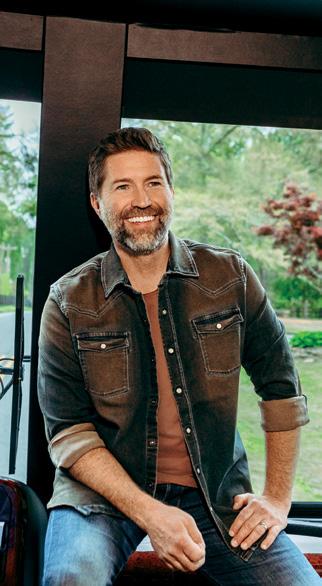





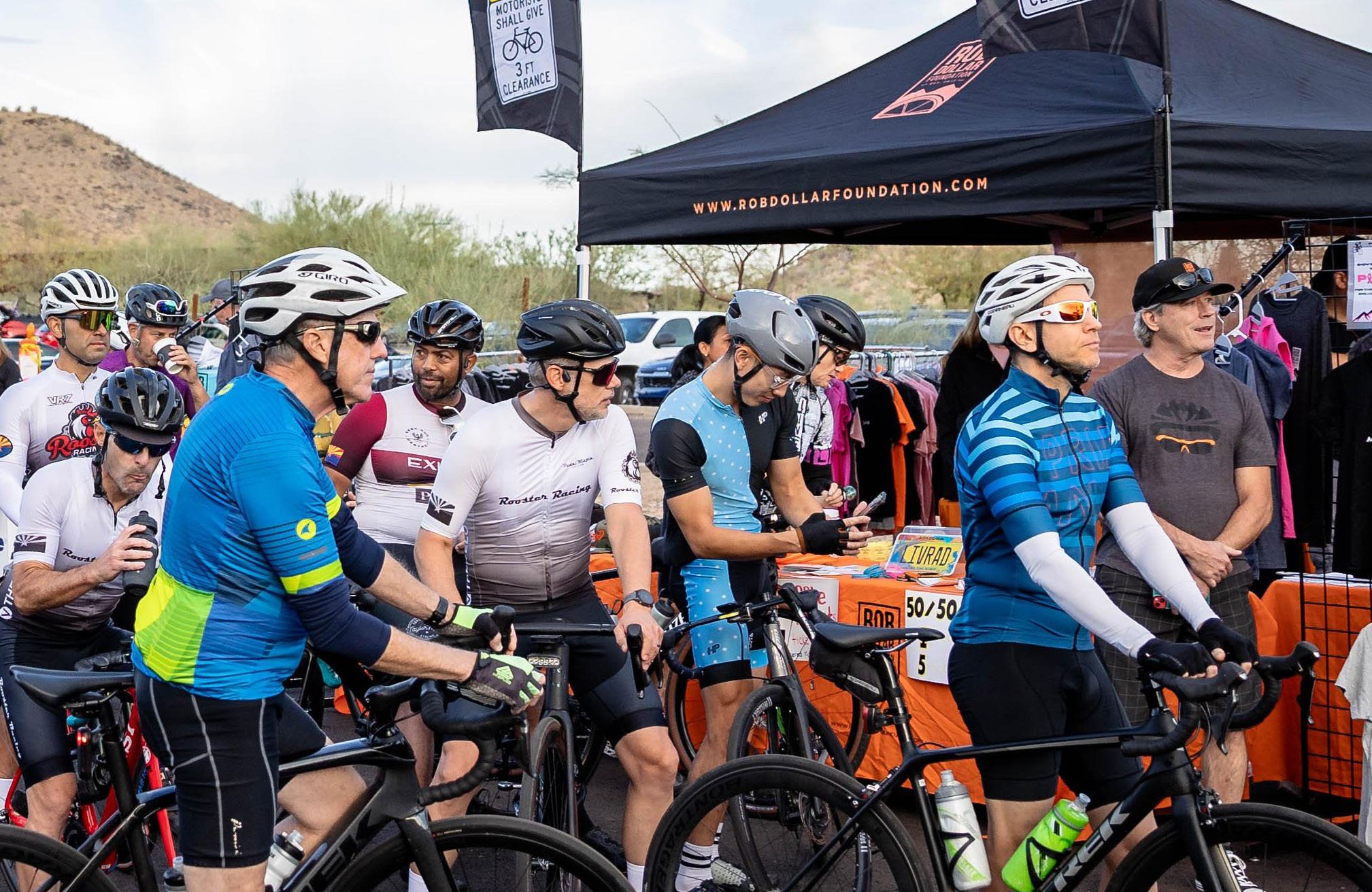
The Rob Dollar Foundation was born from tragedy, yet rides forward with hope. In October 2017, the cycling community lost Rob Dollar, an avid cyclist struck and killed by a driver while out on a Sunday ride. His untimely death spurred his family and friends to transform his plan to start a foundation into reality.
“The foundation was Rob’s vision,” said his father, John Dollar, the president of the Rob Dollar Foundation. “We are keeping his memory alive. That alone helps us deal with his death. And personally, my mission is to save a life, so other families never have to experience what we do every day.”




The foundation is dedicated to promoting cycling safety through education and awareness, ensuring that every cyclist can enjoy the road with peace of mind.
The sheer impact achieved solely through volunteers. Their dedication reflects both the strength of the cycling community and the deep love of Rob’s family and friends.
One of the foundation’s landmark accomplishments was partnering with the nonprofit Uphill Into the Wind to secure Arizona’s “Share the Road” specialty license plate in 2020. This initiative, overcoming years of prior failed attempts, required raising $32,000 and securing gubernatorial approval. “We discovered that many had tried before, but we were determined to see it through,” John said, noting that it was a testament to their community’s passion and persistence.
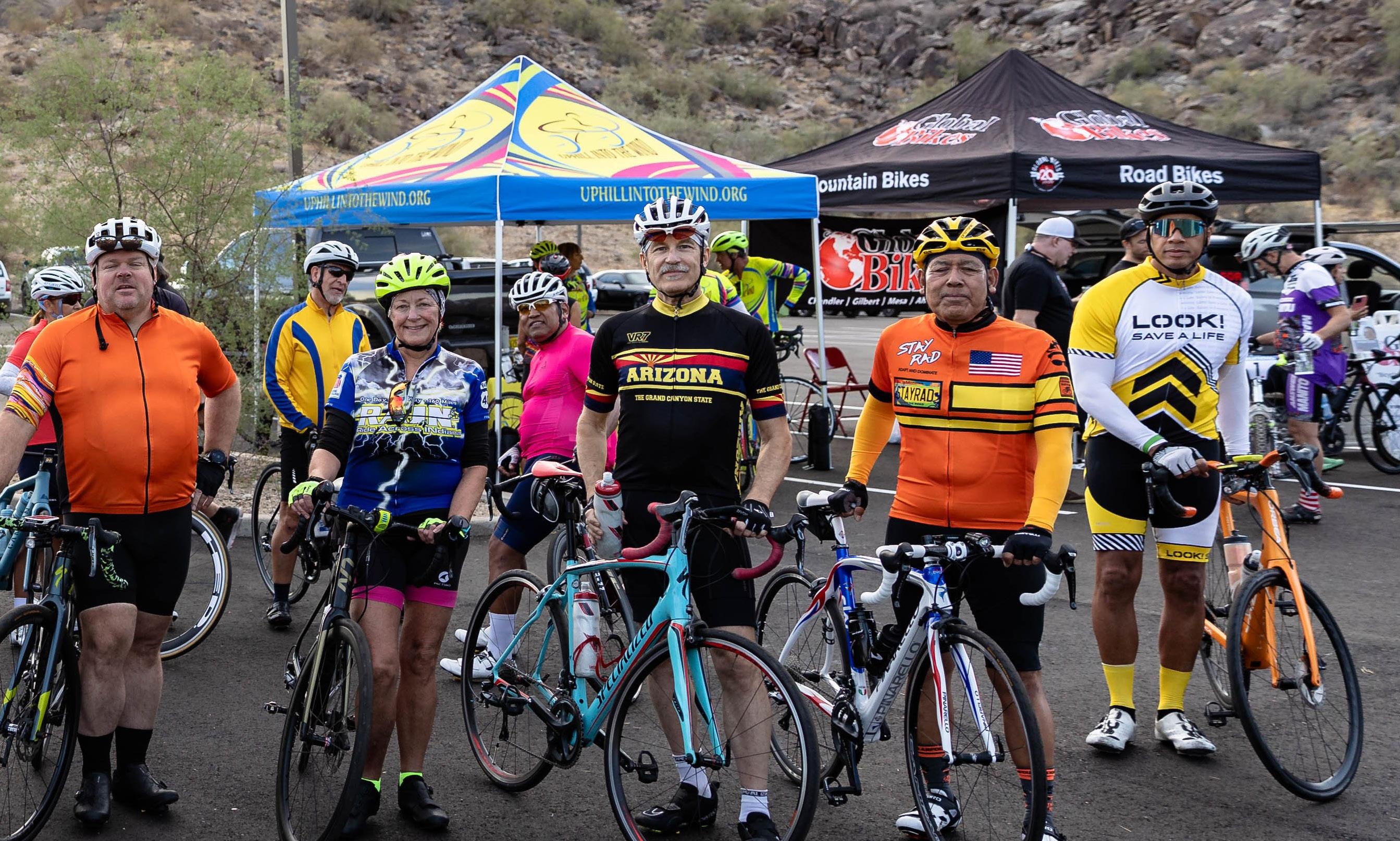
The foundation’s current focus is a campaign to persuade Arizona to launch a statewide cycling awareness initiative. Key messages include cyclists’ legal right to the road, the necessity of motorists maintaining a minimum 3-foot passing clearance (5 feet recommended), and cyclists’ right to occupy a full lane when needed. “An awareness campaign including these three things will educate the public and hopefully help with the negative feedback cyclists get,” John said. “The roads are for everyone — let’s keep everyone safe.”
The foundation is collaborating with capstone teams from Arizona State University and the University of Arizona to develop a handlebarmounted device that captures license plate images of vehicles passing within three feet of cyclists. This data will be instrumental in pushing for legislative changes and improving cycling safety.
“We can collect this data and make changes to current laws and make the roads safer,” John said. “We envision a future where technology and awareness work together to protect cyclists.”
To learn more, visit robdollarfoundation.org

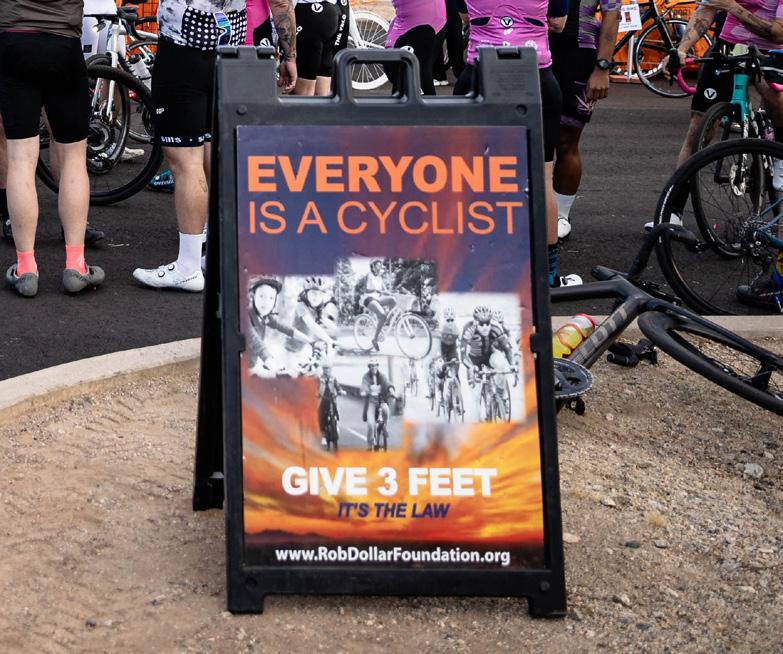
Dress for Success Phoenix empowers women to achieve economic independence by providing a network of support, professional attire, and the development tools needed to help women thrive in work and in life.
We provide each client with professional attire to secure employment, but we are about much more than simply a new outfit. Besides physically equipping the client with apparel and accessories, our extensive job training programs furnish her with a confidence that she carries forever and the knowledge that she can actively define her life, the direction she takes and what success means to her.
Scan to learn more or visit dfsphoenix.org

Serving more than 35,000 women througout the Valley since 2009, Dress for Success Phoenix is an independent 501(c)(3) nonprofit organization and an affiliate of Dress for Success Worldwide. Funds are raised locally and have a direct impact on our local communities.

BY ALISON BAILIN BATZ
While everyone knows about the beaches along the Atlantic and Pacific coasts, what about the Third Coast?
With approximately 10,000 miles of shoreline — more than the entire U.S. Atlantic and Pacific coastlines combined — the Great Lakes are often dubbed the Third Coast. Featuring 200-plus miles of some of the prettiest white sand beaches on the Third Coast, Lake Michigan is among the most accessible of the Great Lakes for Arizonans. Harbor Country is a quick drive from South Bend Airport, Chicago Midway Airport or Chicago O’Hare International Airport. And fun fact: Mesa Gateway Airport offers weekly flights to South
Bend through Allegiant Airlines. Bursting with beachfront towns that cater to every level of travel, Harbor Country especially sparkles during the summer months.
Temperatures rarely rise above 90 degrees or dip below the mid-60s from June to September, meaning it is warm enough for ample outdoor activities but still temperate enough to enjoy brunch on a waterfront patio and wine in a sprawling vineyard.
If visiting for the first time, take advantage of the area’s plentiful boutique accommodations, many of which are nestled along the bustling marinas with 180-degree views of local yachts and sailboats, as well as the endless beaches.



Both the Marina Grand Hotel and the Harbor Grand Hotel are located on New Buffalo’s Oselka’s Snug Harbor Marina, which provides visitors easy access to pontoon, speedboat and yacht rentals as well as guided water tours with experienced captains that handle all the driving while giving a colorful history of the region. They also have jet skis, e-bikes and golf carts for rent. New Buffalo Sailing Excursions is conveniently close, offering personal cruises on a 31-foot sailboat, including sunset and night sails led by a skilled sailing captain. Marina Grand features ultra-modern Scandinavian architecture that integrates natural materials and neutral tones with the surrounding environment. Splurging on a suite here is worth it, as they have extra-large decks and full kitchens; some are even set across two stories. Whether staying at the property or not, make it a point to visit Bentwood Tavern, the hotel’s lavish restaurant. The cuisine is primarily New American, with farm-fresh ingredients and exceptionally well-prepared seasonal vegetables. It also boasts one of the best cocktail menus in town, using the best locally distilled libations. Harbor Grand feels like a sophisticated enclave in the Hamptons with light woods in the public spaces, generous sundeck and indoor pool, as well as complimentary breakfast delivered daily. It also has an exquisite spa that opened in recent years and an Italian


restaurant in the Terrace Room, which is among the top culinary destinations in the region for fine dining.
Just as they are near the marina, both hotels are also within walking distance of the public beach, which boasts 800 feet of white sand, kayak and paddle board rentals and classes, thanks to Third Coast Paddling, and an impressive playground for the kids. The beach lines up to a gorgeous boardwalk nature trail that meanders along a dune line for miles, and there are accessible restrooms, foot showers, boat launch ramps and fishing access. Warren Dunes State Park is also nearby. In addition to a boardwalk, casual eateries and acres of outdoor beauty, the park features unique rugged dune formations that must be seen to be
believed, particularly the 240-foot-tall white sand Tower Hill. These otherworldly forces of nature are the result of receding glacier ice nearly 10,000 years ago and make for both fantastic photos and a killer uphill workout.
The beach and Warren Dunes are a short drive from other adventures, including one of the sneakybest combination brewery, winery and distillery trails in the country. Within about five miles of the marina are Journeyman Distillery, The Stray Dog, Beer Church and Ghost Isle Brewing. Journeyman is unique in that it is one of the few certified organic and kosher distilleries nationwide. It was built in the former Featherbone Factory,
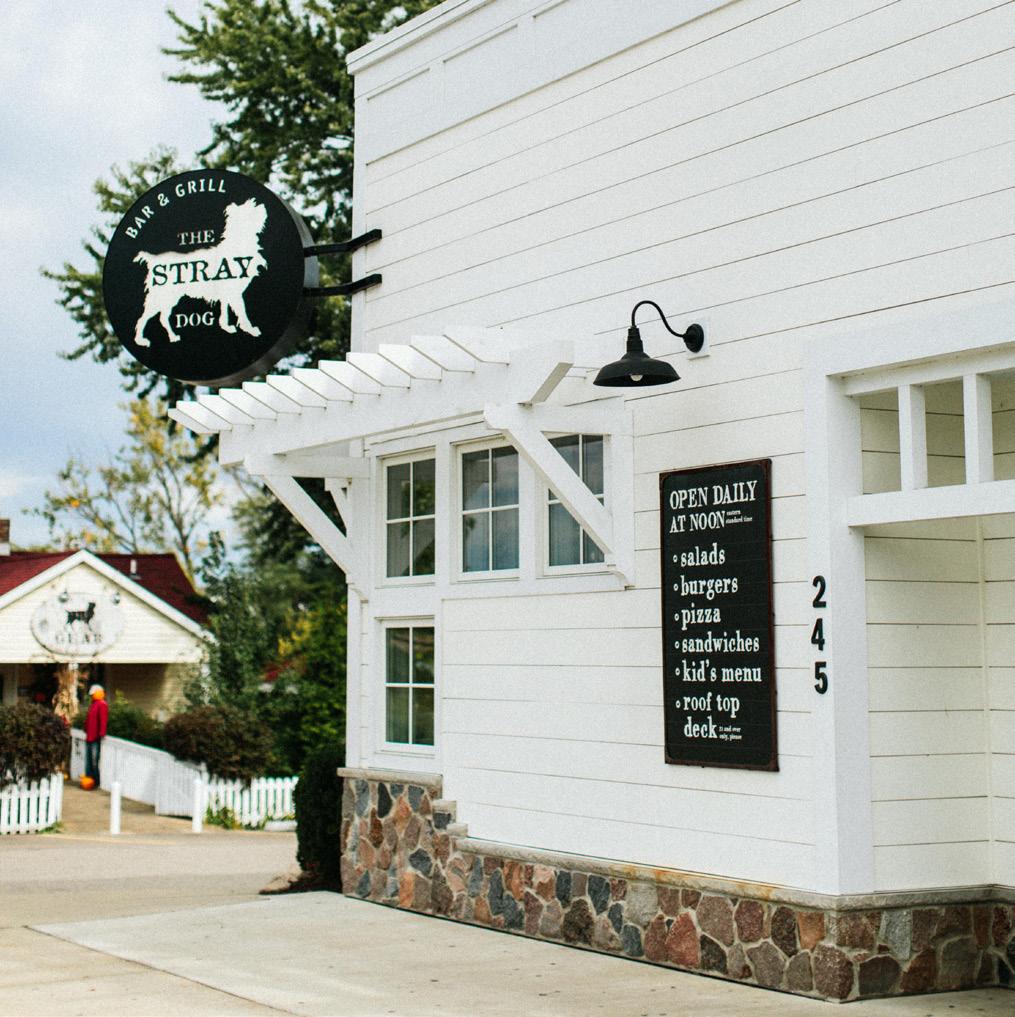


which historically produced corsets and buggy whips. During a distillery tour, guests are in for a treat in hearing the property’s colorful past and spirited present, complemented by more than a dozen samples of various liquors and liqueurs. Journeyman is distinctive for its 30,000-square-foot outdoor putting green and full-service restaurant. It also offers on-site accommodations for those who prefer to stay overnight rather than drive home. Folks flock to Beer Church, Stray Dog and Ghost Isle in the summer months as Beer Church — yes, it is a brewery built into a historic Methodist church — and Stray Dog have the region’s busiest and buzziest rooftop patios. Ghost Isle is built next to a reportedly haunted 156-acre wetland area.
Then there is the wine country, which became popular in the area in great part thanks to Round Barn Estate , a working brewery, busy distillery and full-scale winery.

The estate is ultra-dog friendly with live music regularly, a massive restaurant operation, elegant vineyard cabanas and the option to mix and match a tasting of food, wine, cocktails, spirits, beer and even adult slushies. During the summer, the weekends feature live music, dancing and other special events. Tabor Hill Winery & Restaurant , Free Run Cellars , Dablon Vineyards , Domaine Berrien Cellars and Gravity Winery are also nearby, making a day of wine tasting exceptionally convenient for those who wish to partake.
Finally, while there is no shortage of food and drink experiences in the area, make it a point to stop by Granor Farm, which offers seasonal multi-course dinners in its glass greenhouse showcasing the best of the farm’s crops and other ingredients from fellow local producers.
For more information, visit newbuffaloexplored.com




Every senior deserves safety, dignity, and a place to call home. With your generosity, we can provide shelter and hope to those in urgent need. Central Arizona Shelter Service (CASS) opened The Haven, a 130-unit refurbished motel, this year specifically for seniors experienc ing homelessness. Help us bring them Closer to Home because no one should have to face homelessness alo ne.


The Ra Ra Room offers a luxe private hideaway at PHX Arena
BY SHOSHANA LEON
IN LATE 2024, The Ra Ra Room opened at PHX Arena in downtown Phoenix, marking the first members-only private dining club within a sports and entertainment venue. The $20 million collaboration between Phoenix Suns and Mercury owner Mat Ishbia and the team at Major Food Group mixes high-end hospitality with game-night exclusivity.

“There’s nothing quite like The Ra Ra Room in Phoenix,” said general manager Jared LoPriore. “We are focused on amazing service from the moment members pull up curbside and enter the Gatsby-era dining room.”
The Ra Ra Room brings elements of Major Food Group concepts to Phoenix. One of the most popular dishes is the spicy rigatoni from their Carbone restaurant, which has locations in New York City, Dallas, Miami, Las Vegas and Hong Kong.

The menu showcases a raw bar with caviar toast, oysters and yellowtail ceviche, and appetizers including crab cakes and Wagyu beef tartare. Entrées include a dry-aged tomahawk, veal parmesan and grilled branzino. The dessert menu features beignets with dipping sauces, chocolate fudge cake with coconut whipped cream and ice cream sundae service.
Dining at The Ra Ra Room requires membership, and members can bring guests to experience the restaurant. (A membership for two individuals is priced at $15,000 annually.) “Membership allows us to provide an exclusive and familiar experience for our guests,” LoPriore said. “Servers get to know the members and what they like and want. In the time we’ve been open, great relationships are developing between guests and staff, and our membership is growing.”

The Ra Ra Room is open every Thursday through Saturday, regardless of events, and during every Suns home game, select Mercury games and concerts.
“In hospitality, you never miss an opportunity to impress your guests,” LoPriore said. “Even if they’ve been to the restaurant several times, there’s always something you can do to take the experience further.”
For more information, visit therararoom.com

WHAT HAPPENS when the Mediterranean meets the Southwest? At Feta Cowboy, the result is a flavorful fusion of brisket, birria, shawarma and spice — served up fast, fresh and affordably.
Behind the concept is the team responsible for Pita Jungle, the beloved Arizona-based restaurant that’s been serving healthy Mediterranean fare since 1994. Founded by three ASU students, Pita Jungle helped redefine casual dining in the Valley — and now, with Feta Cowboy, they’re doing it again with a Southwestern twist.
At Feta Cowboy, diners can build their own bowl, pita or burrito, or order signature menu items like a brisket kimchi
bowl, chicken shawarma pita or spicy cauliflower burrito.
“Just like Pita Jungle, everything at Feta Cowboy is super fresh and healthy,” said Bassel Osmani, co-founder of Pita Jungle and Feta Cowboy. “We offer a variety of protein and produce options, and make all of our own sauces from harissa to salsa roja. Our dishes are colorful and vibrant, featuring Mediterranean items like hummus and shawarma, as well as Southwestern items like brisket and birria.”
Feta Cowboy is open daily for lunch and dinner and offers a welcoming dining room and spacious patio. “We offer ample seating, wine, beer and music so people can relax and enjoy their food.”

Pita Jungle is extremely well known with more than 20 locations throughout the state. “As Phoenix grew, Pita Jungle grew organically to reach different areas of the Valley,” Osmani said. “Over the past several years, we’ve experienced a culture shift with more people wanting to eat better and change their lifestyle to be healthier. More restaurants are offering healthy options, but people know us and our food.”
Feta Cowboy has received raves in its first few months. “Some people come to Feta Cowboy because they like Pita Jungle,” Osmani said. “Other people have discovered it in the neighborhood and want to support local business, which is similar to how we built Pita Jungle near the Arizona State University campus. Tempe means a lot to me, and I’m happy we

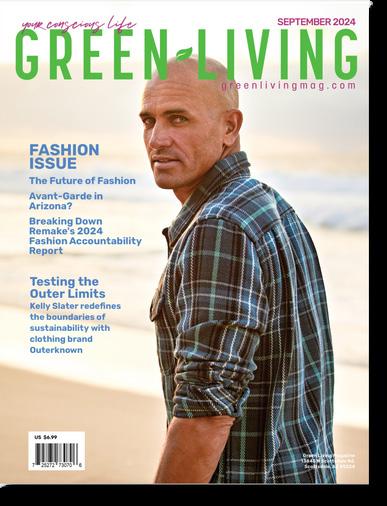



Shiv Supper Club is designed to dazzle
A NEW ADDITION to Old Town Scottsdale’s upscale dining scene, Shiv Supper Club offers a one-ofa-kind experience that blends fine dining with theatrical flair. “We created Shiv Supper Club to be a fully immersive experience inspired by the world’s most renowned dining destinations,” said Ryan Hibbert, CEO of Riot Hospitality Group, which manages Shiv Supper Club and several popular Valley restaurant concepts, including Farm & Craft and Dierks Bentley’s Whiskey Row.
The 14,000-square-foot venue features dramatic lighting, cascading greenery, sculptural accents and nightly entertainment. “At Shiv, every night is a feast for the senses and a vibe worth repeating,” Hibbert said. “The stage comes alive with uniquely composed covers and remixes to contemporary house music, pop and much more.”
Shiv’s menu is a decadent journey starting with tableside truffle butter bread service — fresh truffles hand-shaved into warm, house-made compound butter. Other indulgent dishes include chilled seafood towers, luxe caviar offerings and pan-seared Hokkaido scallops paired with lobster


bisque. Showstopping entrées include a tomahawk steak served with tableside bourbon flambé and Wagyu options from Texas, Australia and Japan.
Dessert gets its own room at Shiv Supper Club with options like dessert caviar service, a playful assortment of fruit-based caviar pearls served with accompaniments like coconut crème fraîche and shortbread cookies.
Other decadent desserts include Fruity Pebbles-inspired pearl cake with layers of cereal-infused sponge cake and creamy milk mousse, and Bananas Foster Baked Alaska, which combines the classic tableside flambé of Bananas Foster with the elegance of Baked Alaska.
“The Dessert Room is a destination within the venue,” Hibbert said. “Guests are transported to a luxe setting where jaw-dropping desserts, bubbly champagne and curated entertainment converge. This isn’t just a sweet finish; it’s a celebration of decadence that invites guests to extend their night in style.”
Cocktails carry the indulgent theme, from the Tikiinspired Secret Stash with Mezcal, rum and falernum to the Well Dressed, an elegant take on a gin martini served with salt and pepper popcorn.
“Shiv delivers an elevated, sensory-rich experience that redefines what modern dining can be,” Hibbert said. “Shiv isn’t just a restaurant; it’s a destination that blends culinary artistry with theatrical flair, offering a level of detail and creativity that stands out.”
For more information, visit shivsupperclub.com.

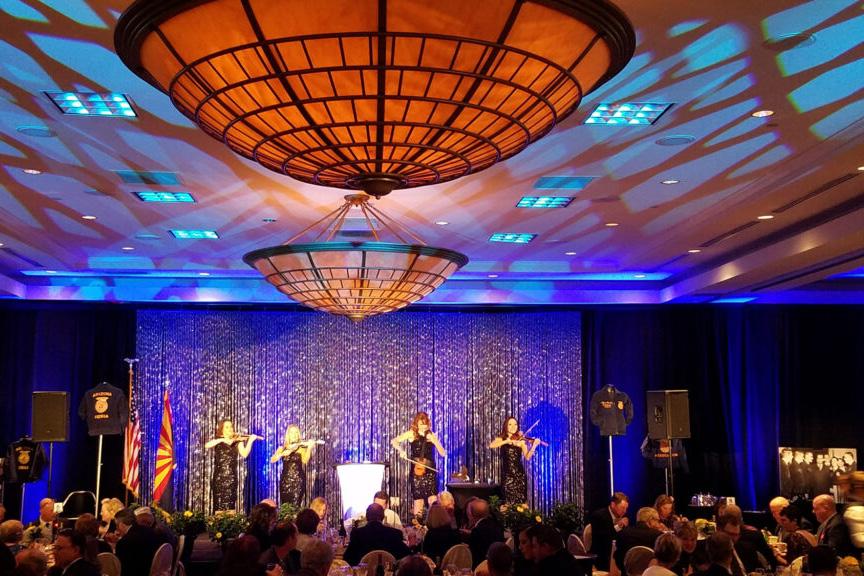











CEO of Dress for Success Phoenix


“The Let Them Theory”
by Mel Robbins
“Mel Robbins’ ‘The Let Them Theory’ introduces a transformative approach to personal empowerment and relationships. At its core, the theory revolves around two simple yet profound words: Let them. Robbins encourages readers to release the exhausting need to control others’ actions and instead focus on their own responses and growth. The book combines relatable anecdotes, psychological insights and actionable advice, making it both engaging and practical. Robbins’ emphasis on boundaries and self-awareness resonates deeply in today’s world. I highly recommend this book because it offers a liberating perspective on navigating life’s challenges and the need to control every outcome. Its straightforward yet impactful message empowered me to prioritize my own well-being and happiness. As I navigate my personal and professional growth journey, ‘The Let Them Theory’ provides tools to help me create a more balanced and fulfilling way of life. By releasing others to make their own decisions and setting boundaries regarding mine, I have more peace and energy to focus on my own goals and priorities. This mindset shift has been a game-changer for me!”
Learn more about Dress for Success at dfsphoenix.org




The Brophy boys brought the style — and the swagger — to the 41st annual Brophy Fashion Show on April 11 at the JW Marriott Camelback Inn. Over 275 seniors, including Ayden Madi (shown here), lit up the runway in looks from more than 28 local retailers, all while repping their sports, clubs and Class of 2025 spirit.
The best part? The show raised more than $700,000 for Brophy’s Financial Aid Fund, which supports one in three Brophy students who receive need-verified financial aid, ensuring more students have access to a Brophy education. Fashion with heart? We’re here for it.
To learn more, visit brophyprep.org/giving/fashion-show.


•
•


